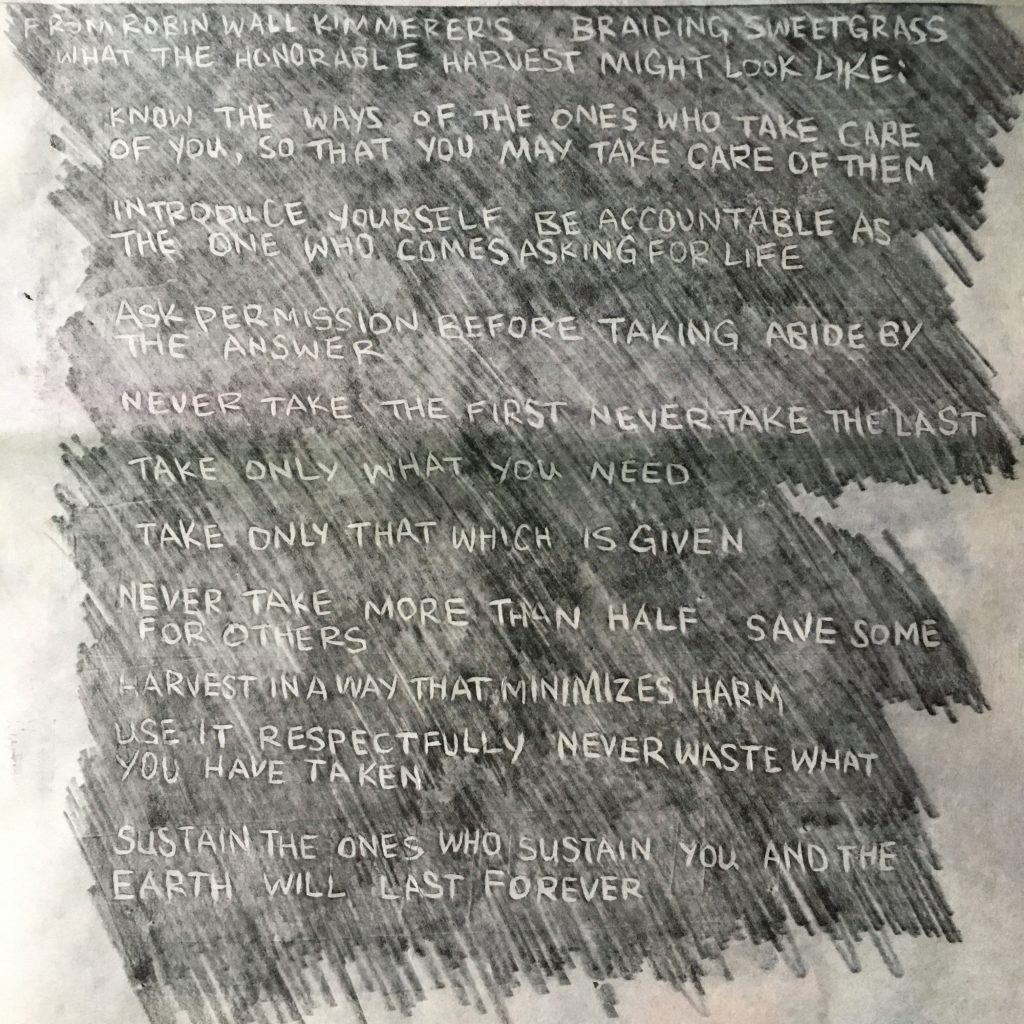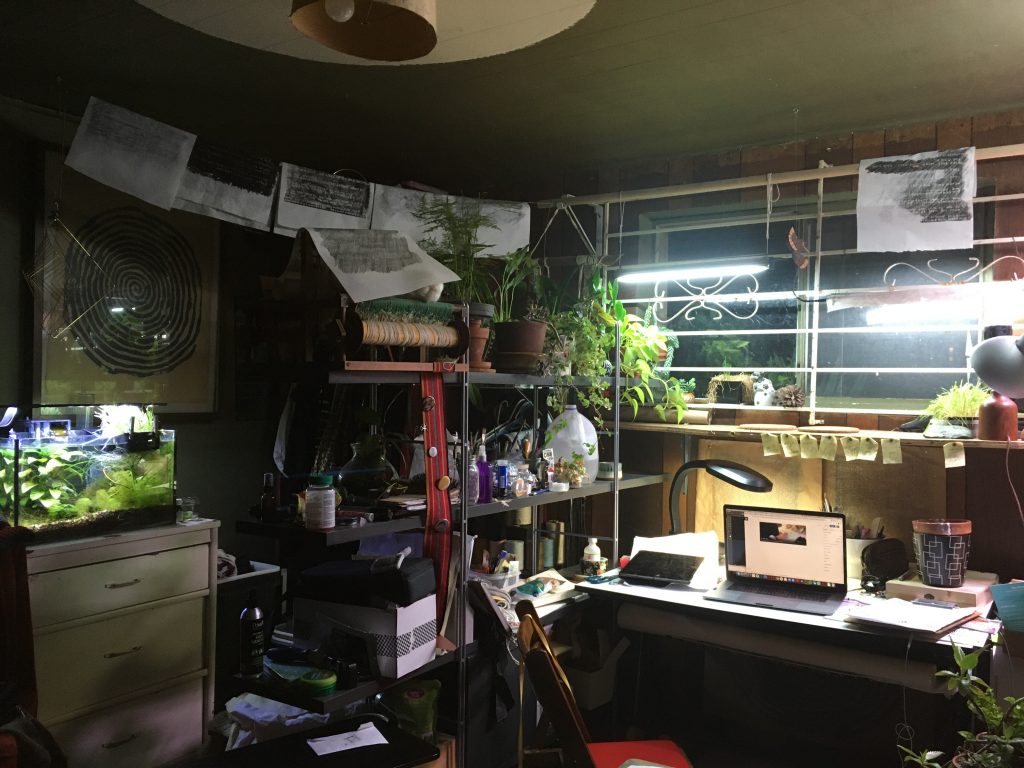
Peer Review















So normally you use a warping board to set up your warp, but I didn’t have one, nor did the soft shop. I could have made one in the wood shop, but I got impatient, I wanted to get to the weaving part. So I used what I had available to me, table legs. I am not sure if my Aunt Norma would be proud of me or horrified. She had taught us how to measure the threads per inch, to use a chart and a project plan to calculate and project how much warp we would need, and then to weigh the threads to reduce wasted yardage and materials. I did none of this. I don’t even know how long my warp is. Its on the small side. It’s one table longwise and one table width wise, and the cross is not as close to the end as it should be, it is where the table legs allowed it to be. I have a vague idea of what I want to make with the woven cloth. I have this fanny pack I love to use, and some extra zippers stashed away. I figure I can make a nice series of fanny packs to give to friends, or maybe sell if people like them.
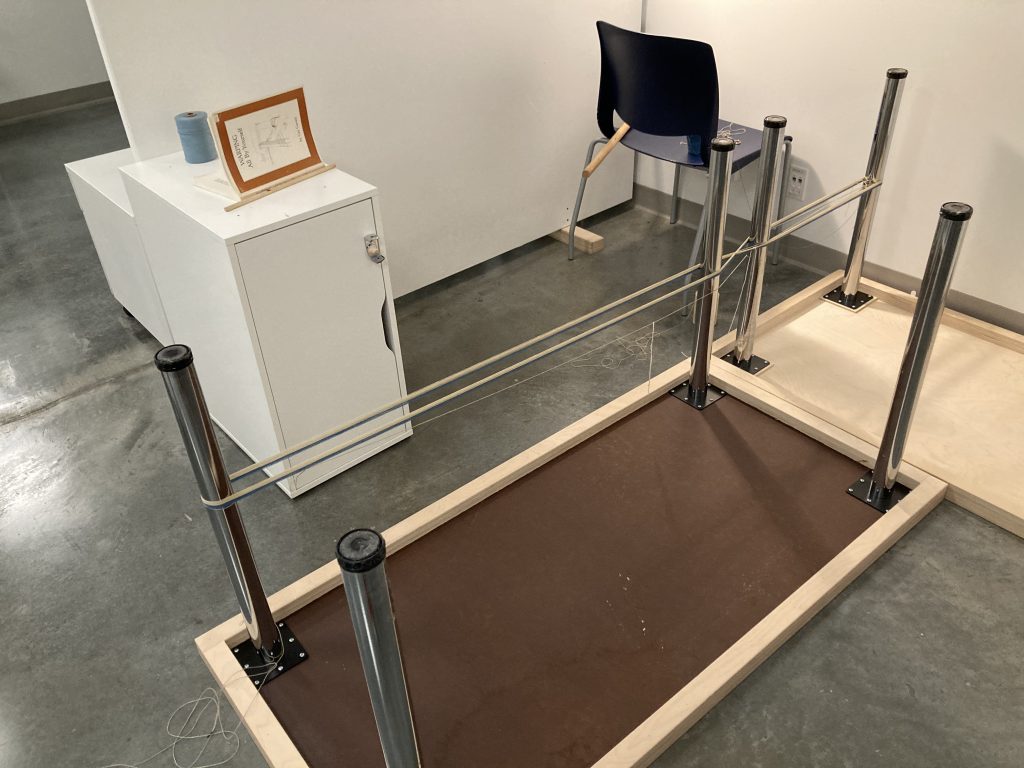

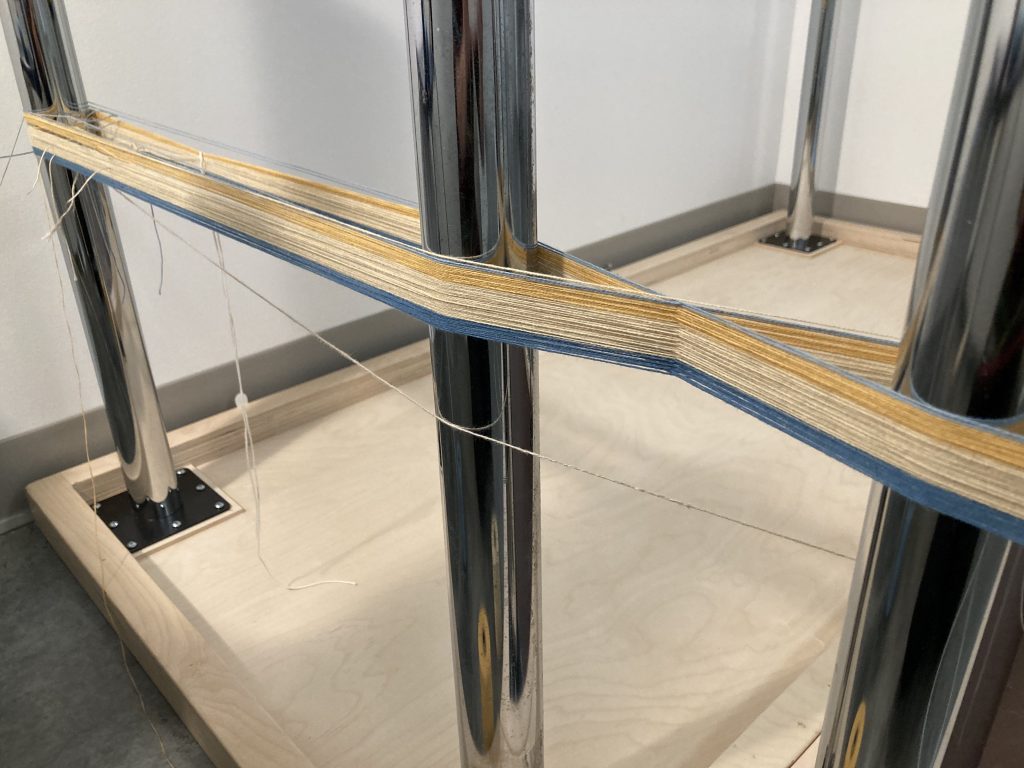
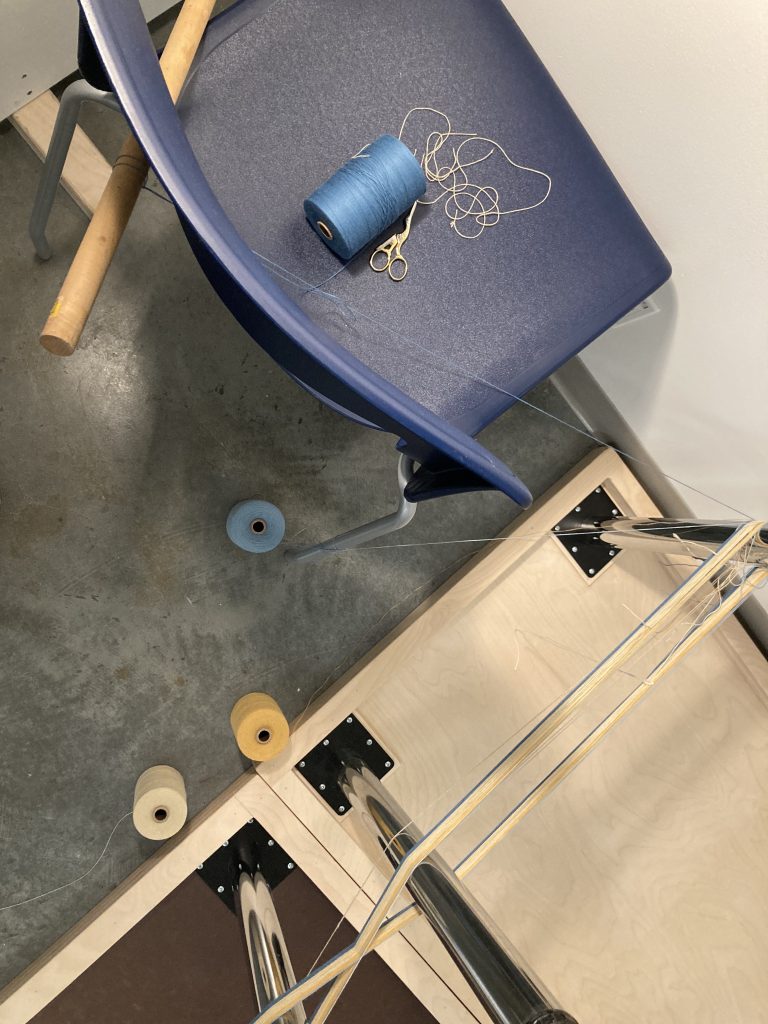
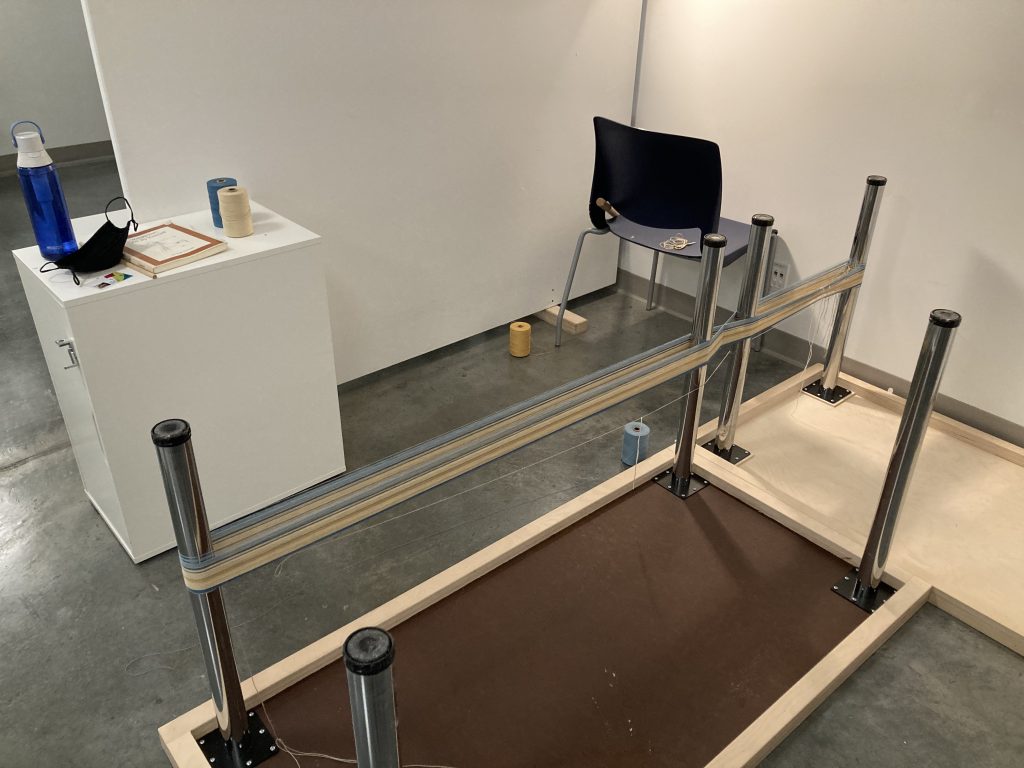

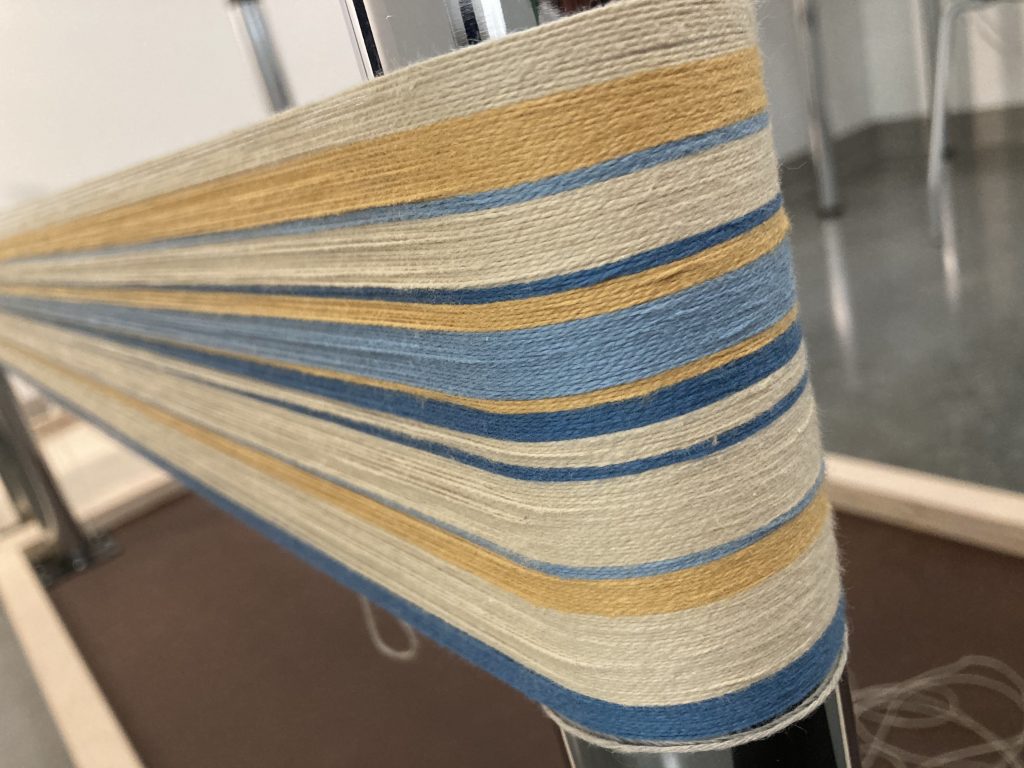
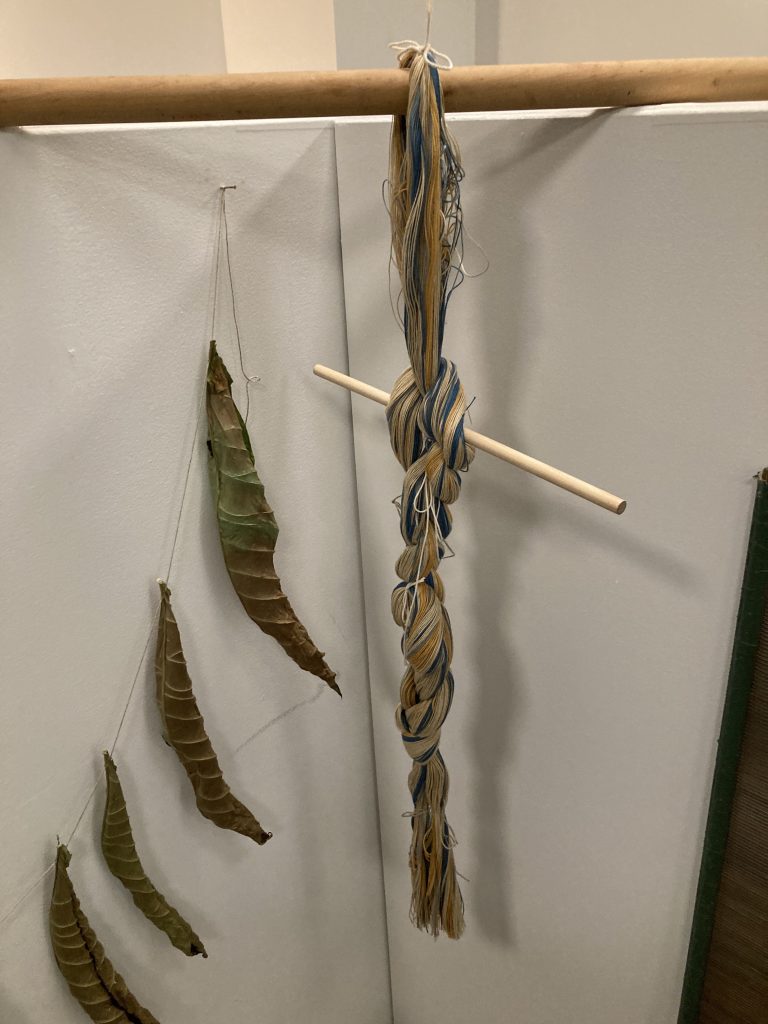
I was thinking about data while I was winding the warp, particularly inspired by Chloe’s work, and her ability to take her personal data, filter and interpret it through experiential actions. Garima is in the studio the day I wind the string. We talk about data, computation, and critical fabulation. There is something so mathematical about planning a weaving project. We talk about the validity of data, and Garima points out that I am making decisions to change the colour at certain points. There is a rationale behind the colour changes. I am not translating a data set into the warp, but the warp itself is becoming the data-set. There is a proportionality I am maintaining as I wind. 24, 12, 6, 4, 3. somehow the pattern relates back to the number 12, divisible by/into, or adds up to 12, I have decided to use a 12 dent reed, which is the smallest I have, that means I can have 1 thread per dent, and get 12 threads per inch, or 2 threads per dent and get 24 threads per inch. Or I can create a pattern where I make the weft shift from tight to open. I probably should have planned more before I started, but I like that I am learning by doing.
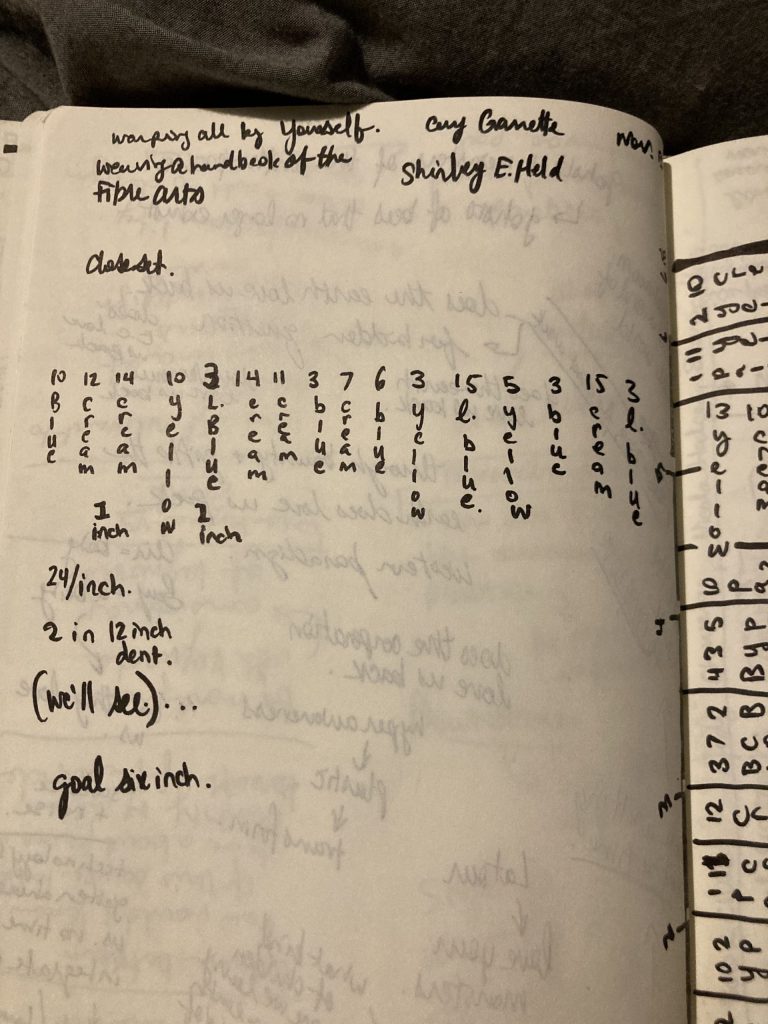
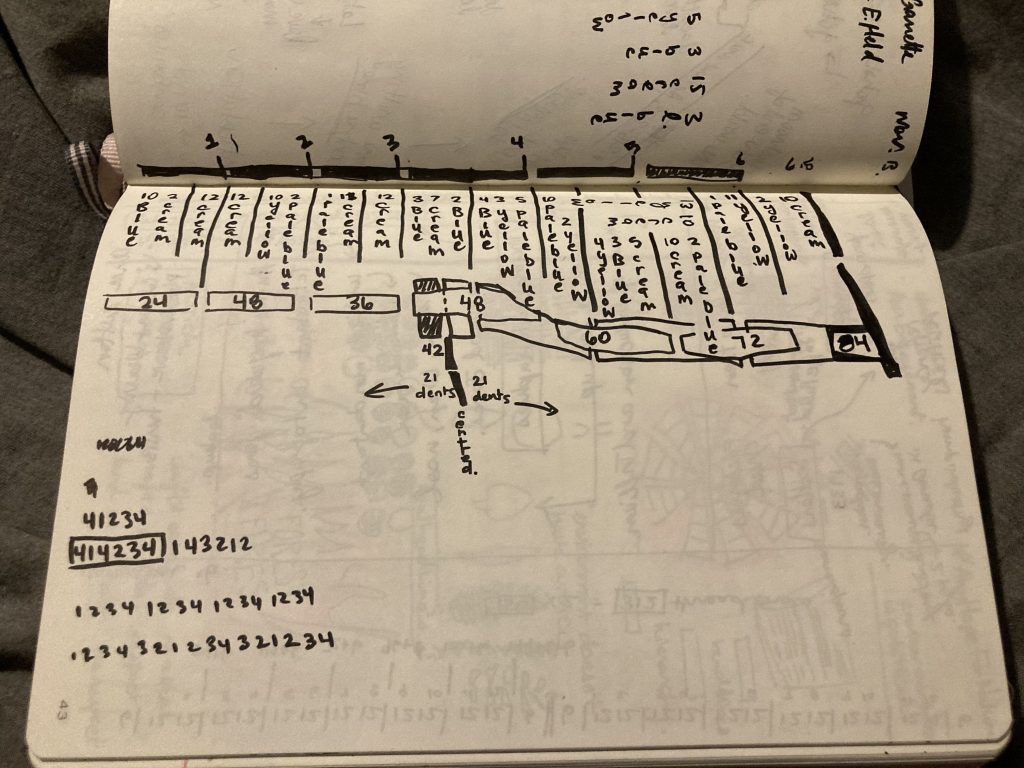
I enjoyed the process of dressing the loom but realized that this work would definitely be easier with more than one person. I felt pretty fortunate to have this book in my collection. I also had a DVD that I could play at home on Bill’s Xbox with tips on how to dress a loom, and my notes from 4 years ago when my mom and I were being taught by my Aunt Norma. I did start to feel a bit of anxiety, because I assumed I could get the loom dressed in a day and start weaving right away, Instead the week came to a close and I had gotten as far as making the warp, getting the warp tied onto the back beam, making new lease sticks to replace the ones that got lost in shipping and getting the threads spaced through the rattle. I started to wonder though, in this project and the dying project, and even with the embroidery I have started to do, I keep referring to books. I think I am afraid to proceed without doing my homework/research first. Sometimes I wing it and improvise as I go, but I keep noticing a tendency to want to check-in and make sure I am doing it right. I think in non-pandemic times I prefer to learn from someone. To watch how they do it or have someone there to ask a question when I get stuck. I wonder if this is a colonial way of learning, and want to bring more awareness, spend more time noticing when I hold back and wait for confirmation before proceeding. I admire the trait in others where they just go for it and develop their process as they problem-solve along the way. Maybe I am overthinking it, I had books to reference, but I still made lots of mistakes, and I still had to improvise along the way.
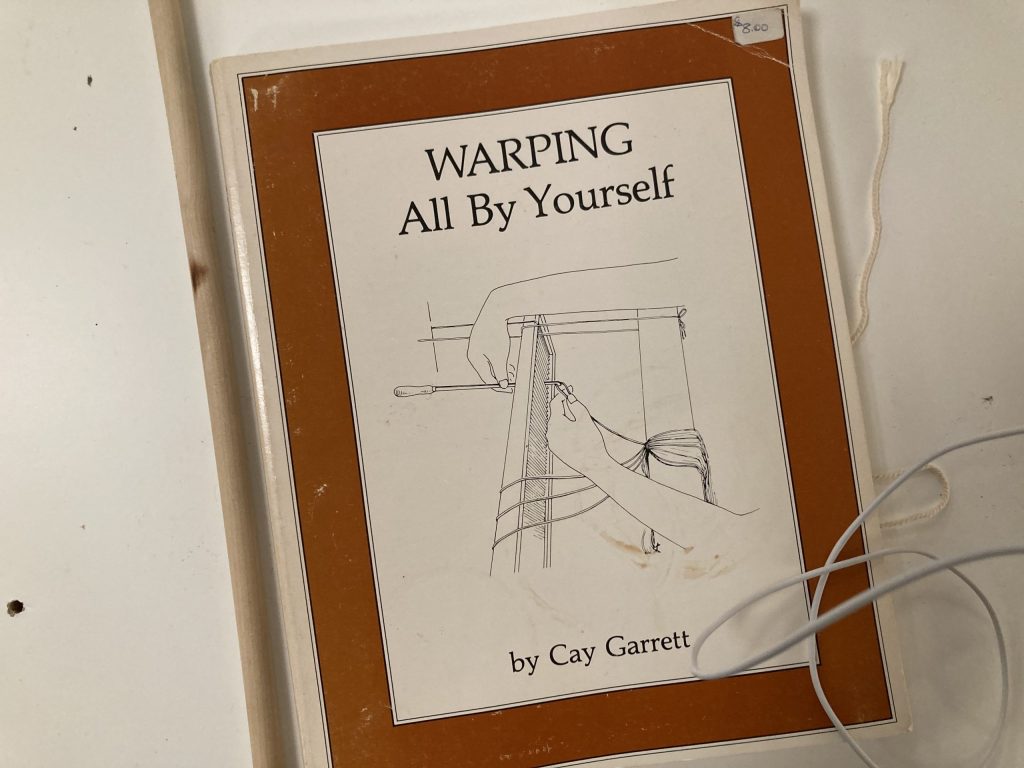
So before I could untie my warp and start spreading it out I had to make some new lease sticks, there is this amazing trick of putting a cross in your warp that helps keep your threads in order while you get it onto the loom . The lease sticks help you maintain your cross through the next bunch of steps dressing the loom, you only take them out at the very end right before you start weaving. The rattle is a cool step too, it helps you space out the threads, and keep them in order while you wind the warp onto the back beam. I remember Aunt Norma saying that keeping good tension through this phase was important. So, I try to work steady and methodical. I also have to make some decisions. How wide will my cloth be, what am I going to do for the tie up pattern, and threading the heddles, I really don’t know what I am doing. My mom is a beginner as well. She doesn’t have answers for me, but talking it through with her makes me feel more confident. Its actually pretty nice, I spent a lot of FaceTime with my mom this week. I think she enjoyed hearing from me, and seeing what I was up to. As I worked, I started to come up with ideas for modifying my tools and process, for the next warp, I would like to build a new rattle. My mom built that one to go into the beater bar, but I think I want to build one I can clamp to the the top castle bar. That way I can work standing up, I think it would make the next step of threading the heddles easier too. Or not.
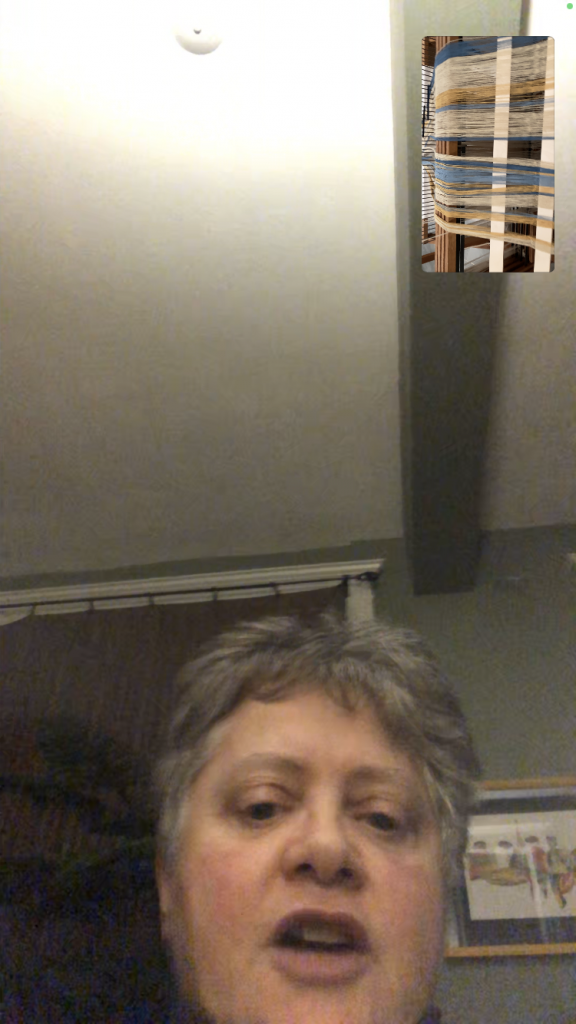
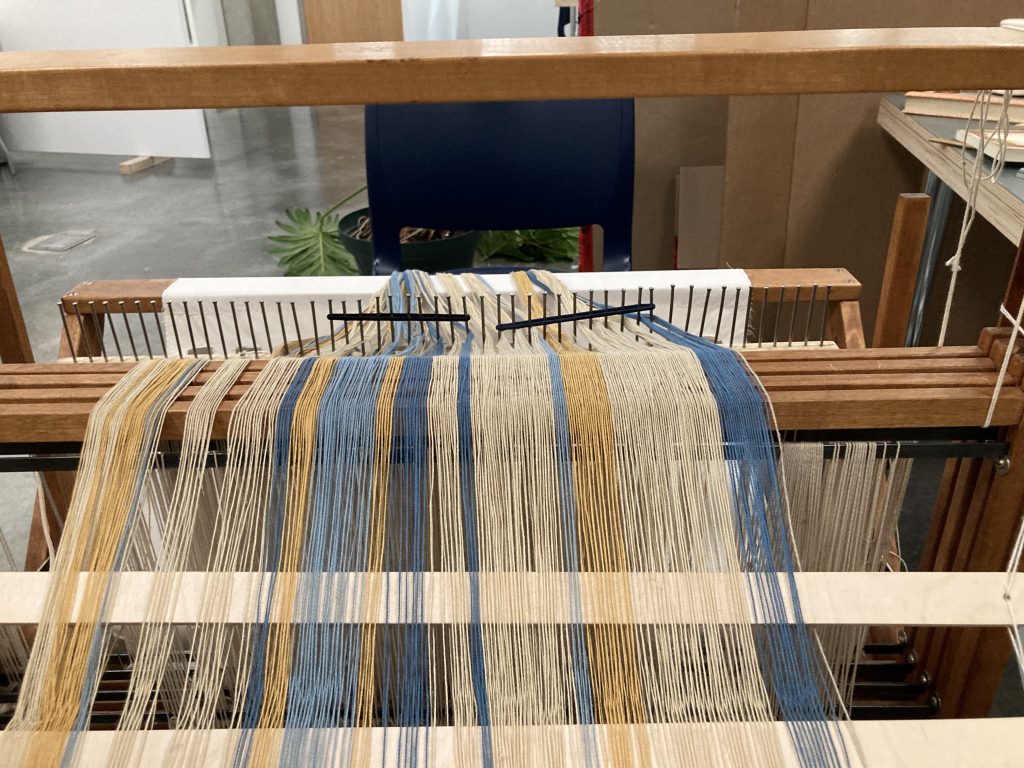
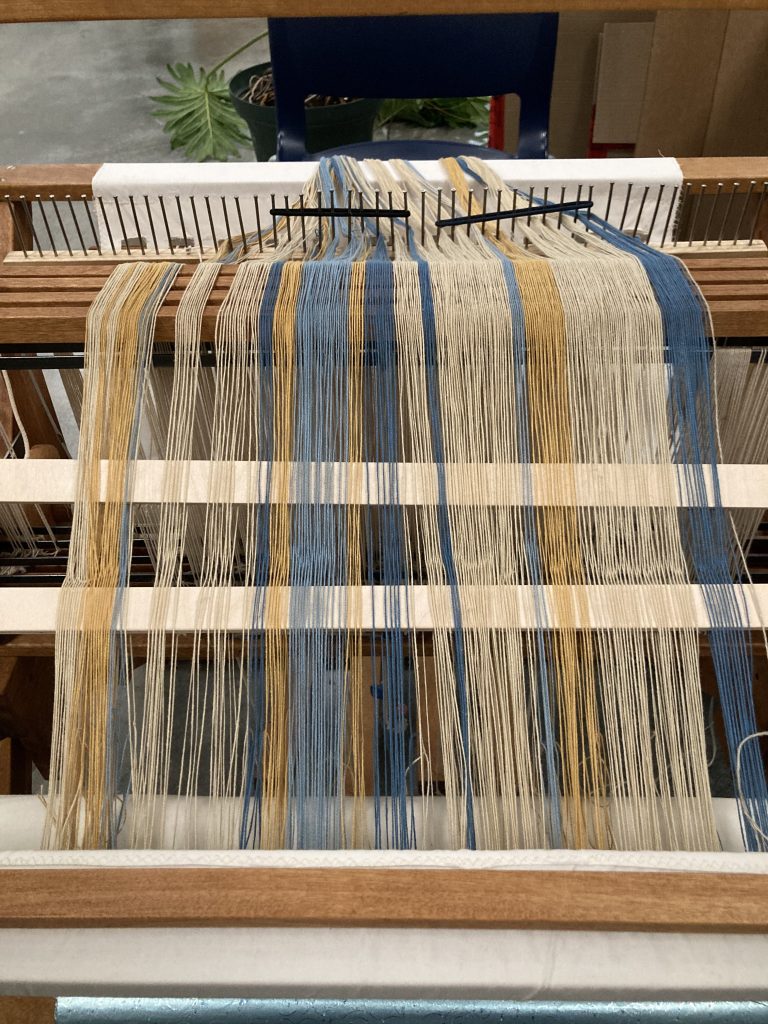
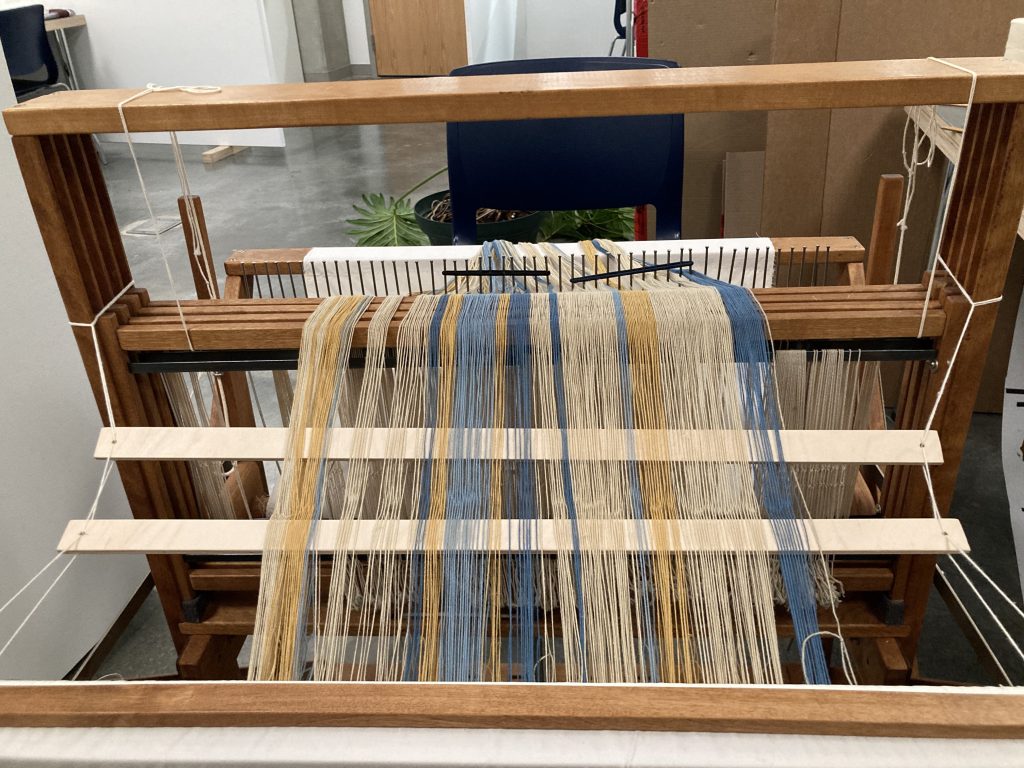
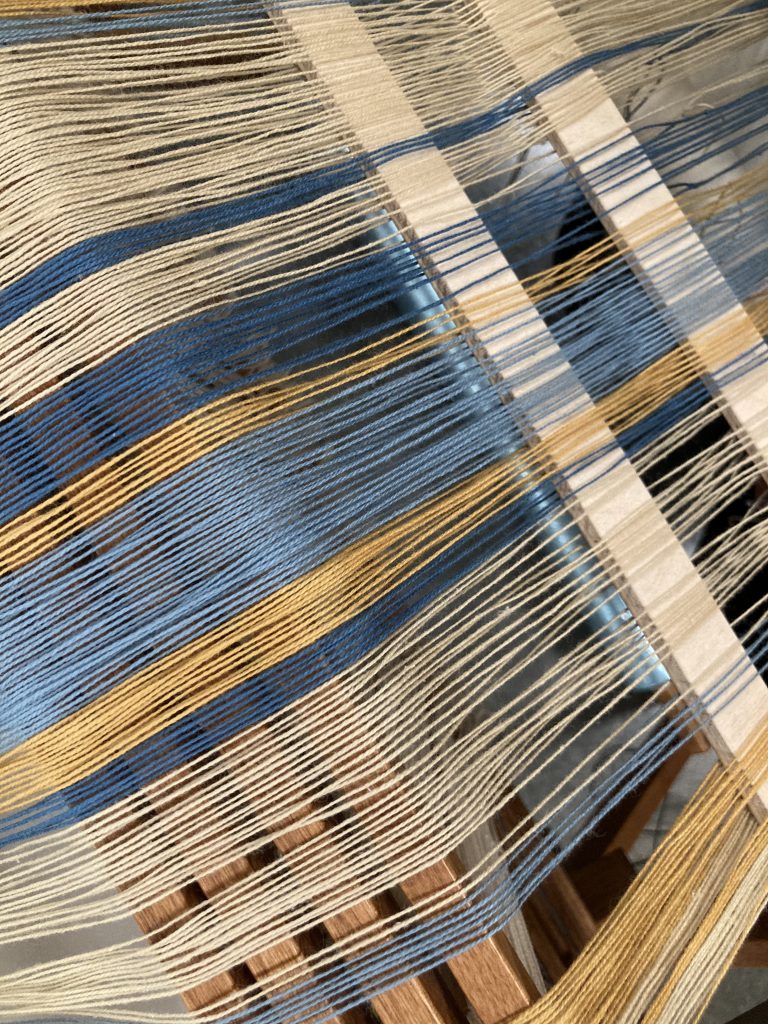
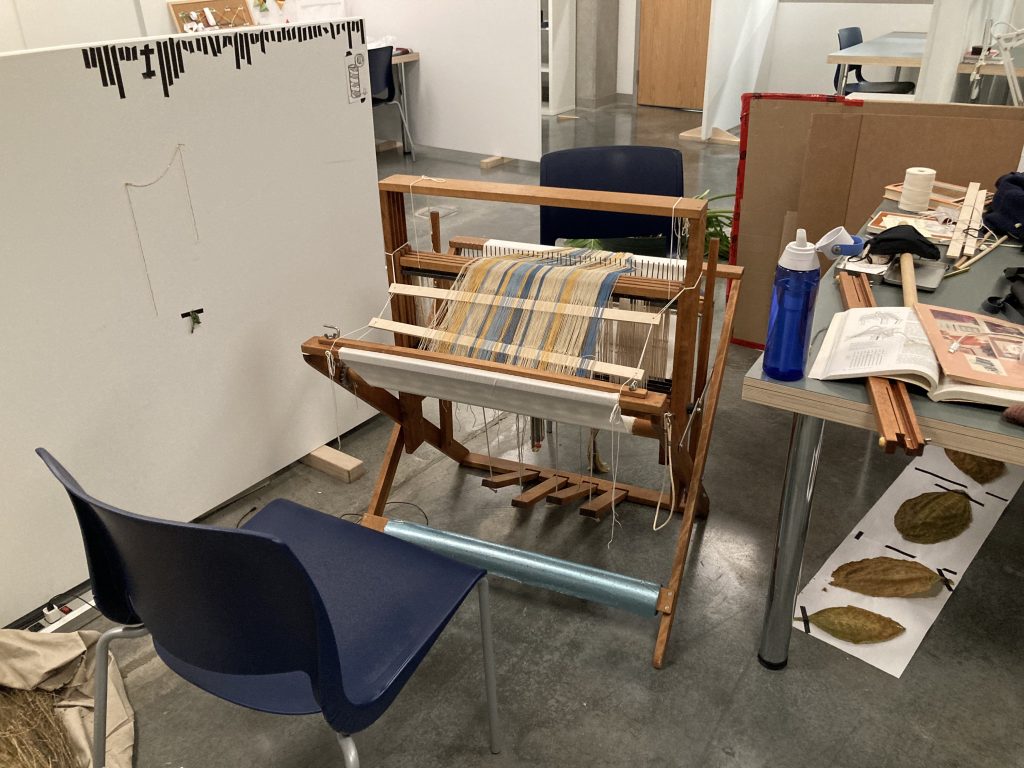
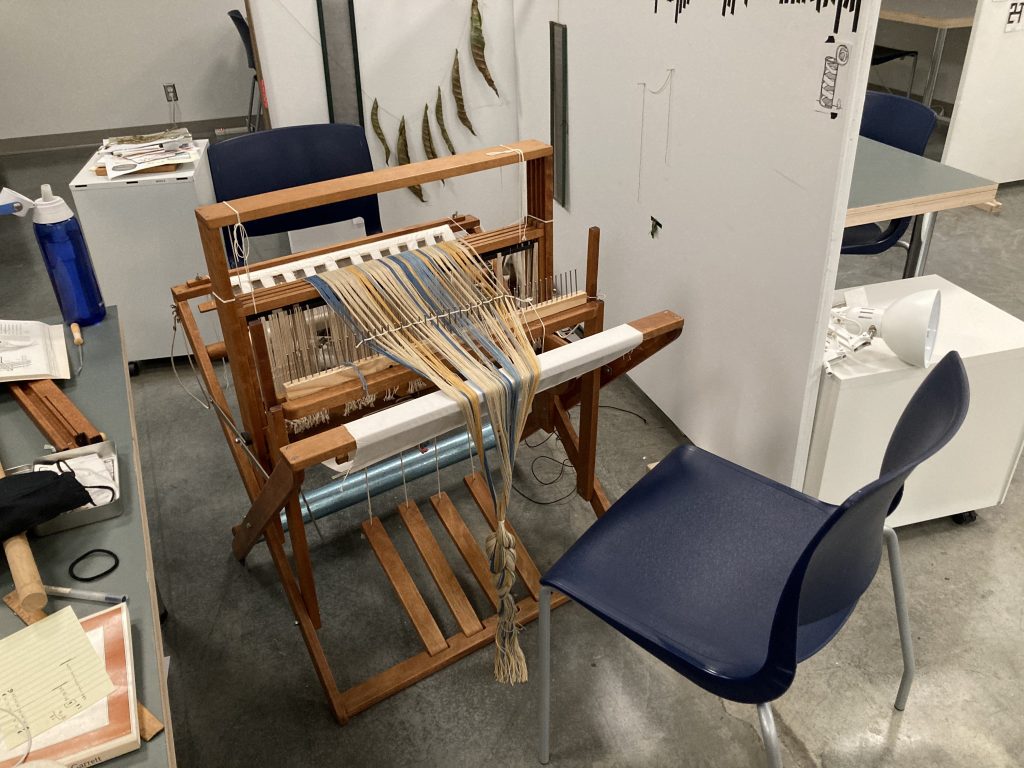
The tobacco leaves had dried out and become crispy, it seemed like a good time to process them. I still had no idea what I was doing, but knew they should be cured, so I got a glass jar, and started breaking the leaf matter away from the stems to fill the jar. I couldn’t believe how much tobacco I had harvested. In order to keep making space in the jar I took a wooden dowel and used it to crush the leaves further. It was messy, it made a satisfying crunching sound, similar to eating potato chips. My fingers got sticky from the tobacco residue. I am still curious, why is tobacco used as a way to show gratitude when harvesting. I know that nicanoides, a type of insecticide, are made from the nicotine in tobacco, I wondered if it is the insecticidal properties that in small doses increase the health and well being of the plants and ecosystems being harvested from. Next year I will move from drying to curing a little faster. The smell I associate with tobacco has just started to form, and is still pretty faint. I wonder if I let them dry out too much before transferring to the jar.
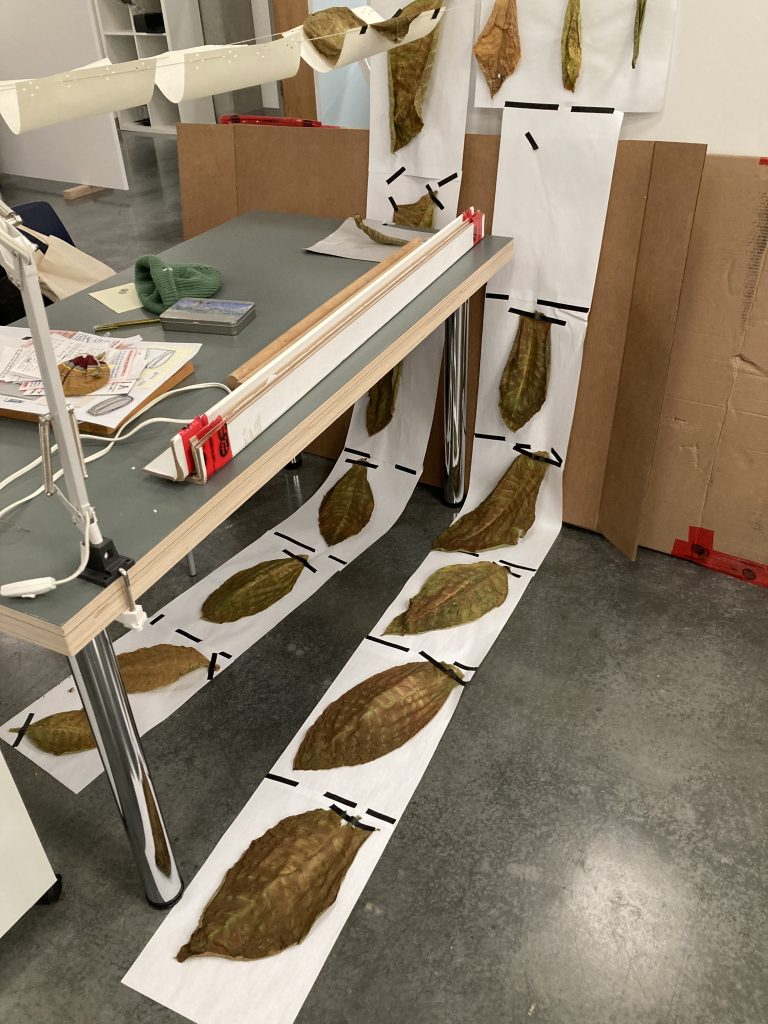

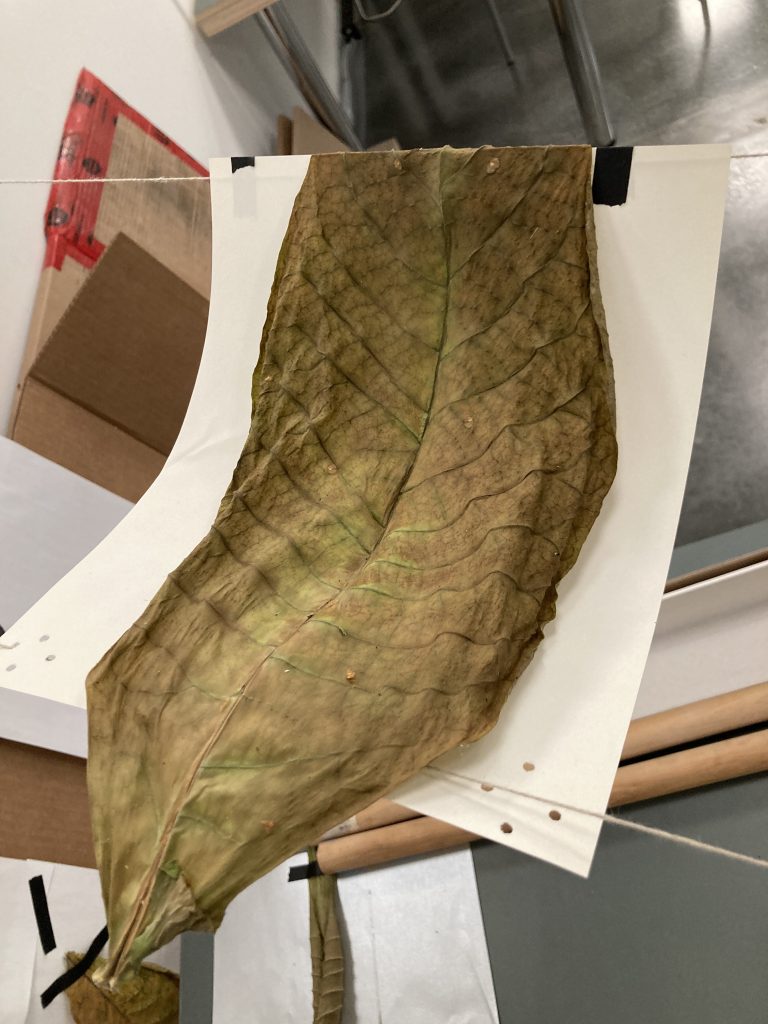
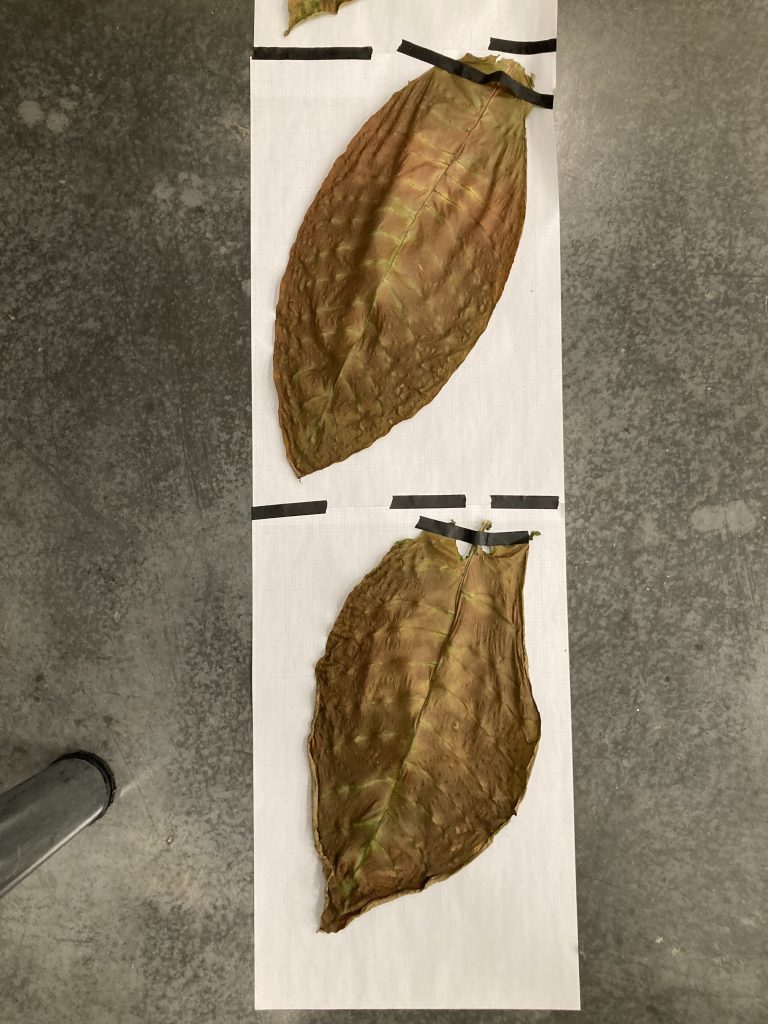

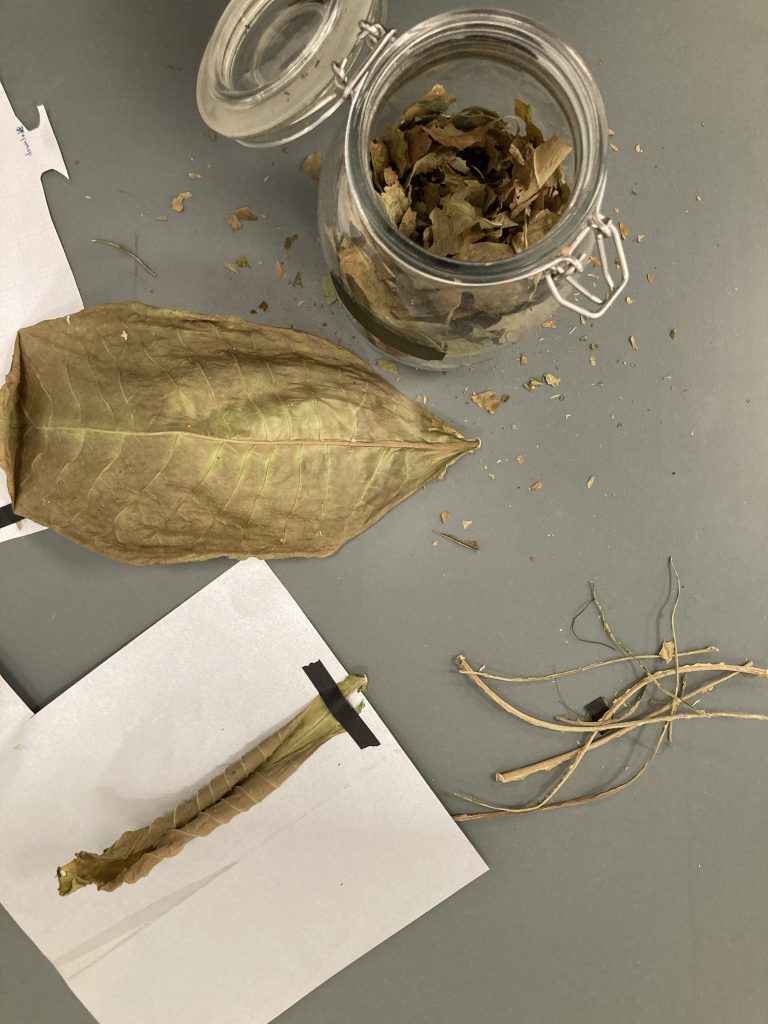

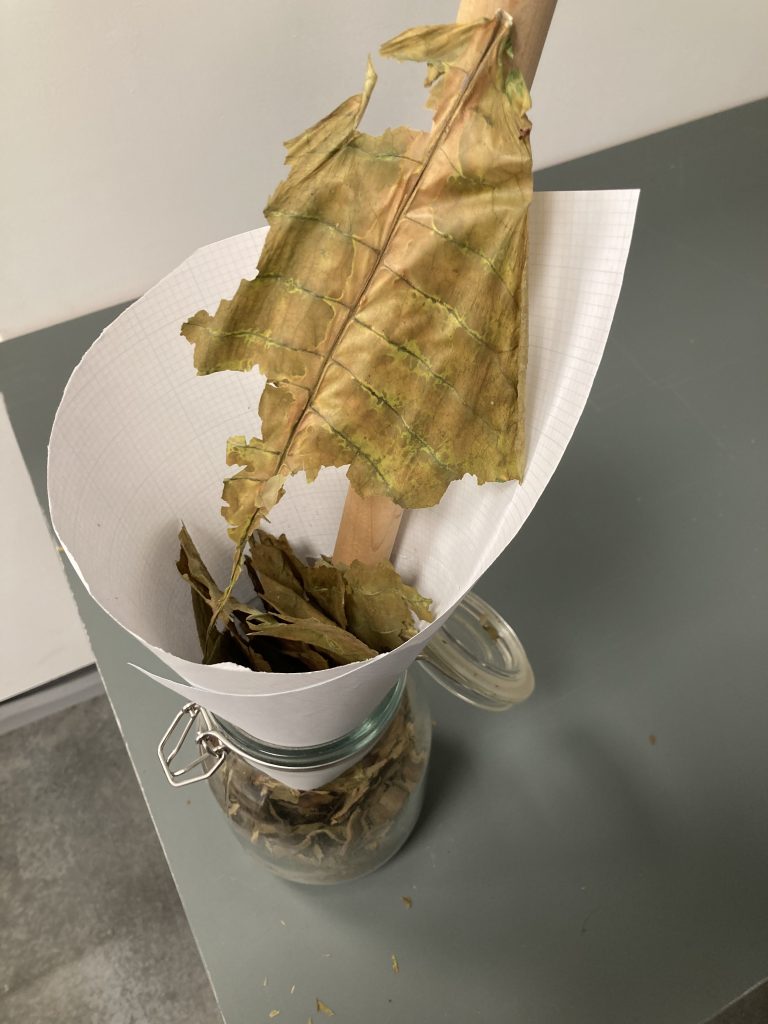
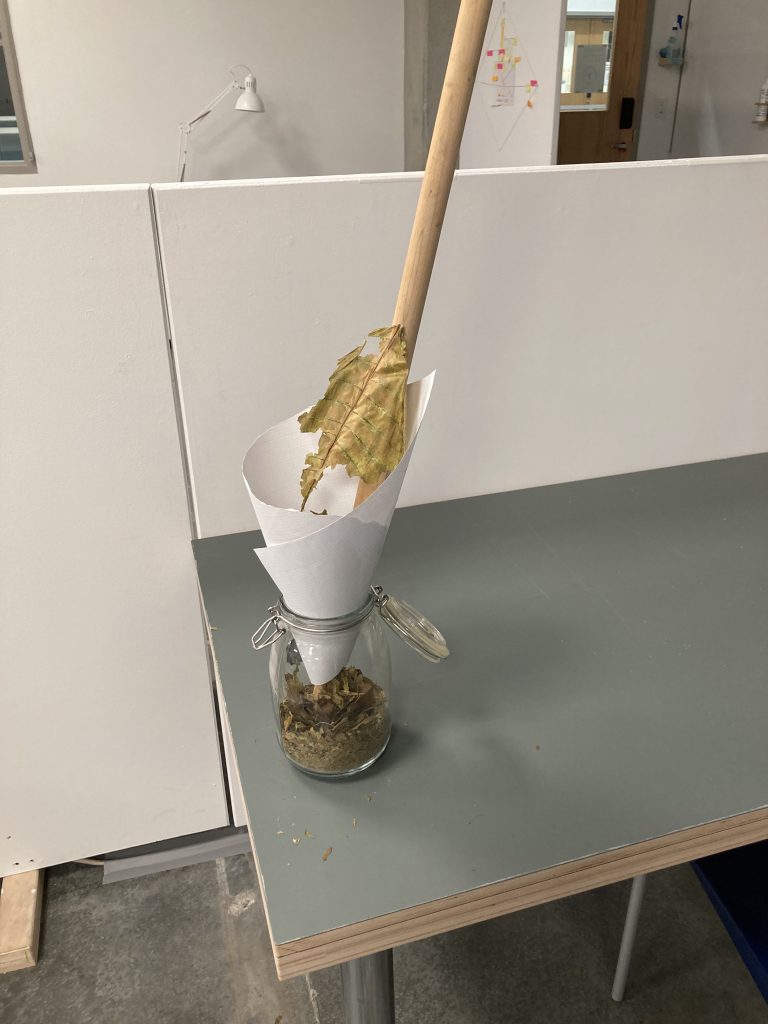
So, I had ambitions of doing a whole bunch of dye work this week. Last week I had spent time out in the neighbourhood gathering and harvesting. I have a giant pile of acorns now. But realized that there is a bit more that goes into dying than just the colour. This week I learned about the invisible work that goes into dying the fabric, the scouring and mordanting. But before that work begins, time for dinner.

So I gathered up all the samples of fibres I had around the house, as well as the linen that I purchased. It might be a while before I have the skill to turn flax into the fabric, so for now, I will have to purchase the linen I want to work with. I weigh all the fabrics and calculate the amount of detergent and soda ash I should use. This is where I get the most confused. Every source I look at says something different. Some say absolutely not to use regular washing soda, others say they do. I find myself in a holding pattern for a few days, I decide to not use the washing soda and instead order in the soda ash. For some reason, I am finding it hard to act. I have no idea what I am doing and wish I had someone with more experience to turn to. I seem to have this tendency, this desire to learn from someone. I have to push back against that tendency, and just dive in. There is no risk here, any mistakes will be a part of the learning. I remember my Aunt Norma telling me to keep detailed notes about my textile projects so I have something to reference. I figure if I am going to be making a bunch of mistakes, it’ll be good to have a recording so that I have a starting place of what not to do the next time. I am listening to Robin Wall Kimmerers audiobook, where she narrates Braiding Sweetgrass. She talks about her role as a teacher, and as a student. She talks about her students becoming her teachers, and about the plants as teachers. She describes in one chapter on basket weaver how an elder teaches the young children. He makes a horse for them as an example, places it before them without instruction then leaves them to figure out how to make a horse for themselves. I realized at that moment, that I have enough information to move forward with, even if I don’t have all the answers. This helps me mobilize again. Unfortunately the weather has shifted, I missed the window for working outside on a sunny afternoon. Everything takes longer than I expect, and I spend the next few days working in the dark, and setting up tarps to weather the rainstorm.
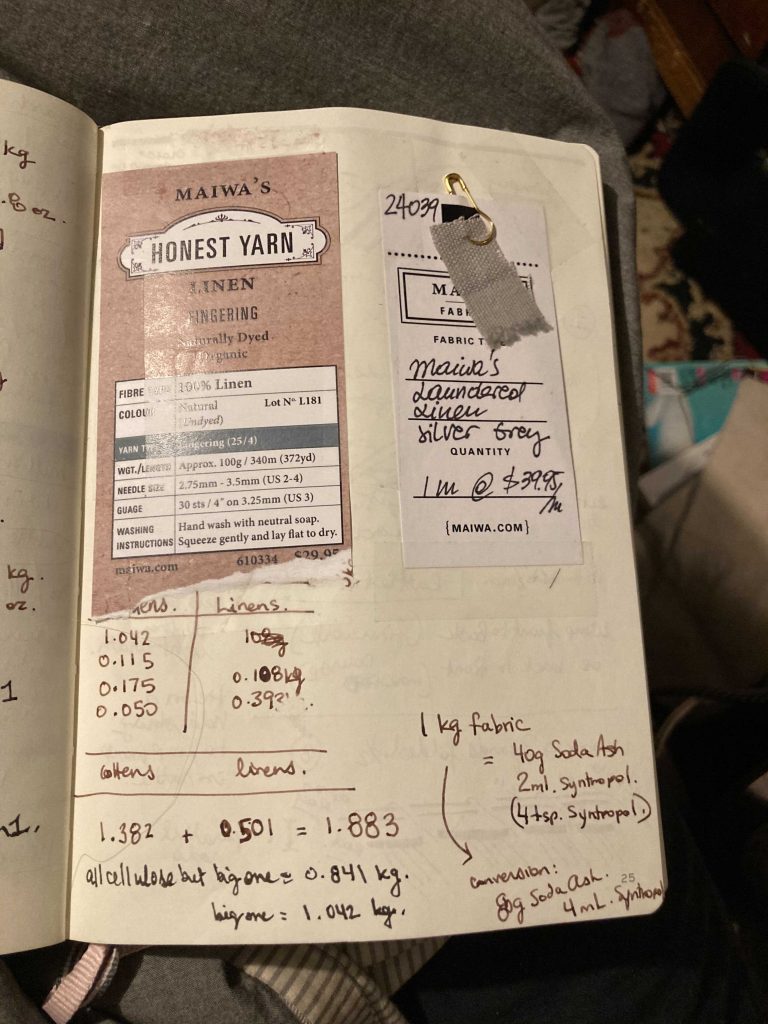

So I probably wasn’t as efficient as I could have been. I washed the fabrics in detergent at my sibling’s house (Bill and I don’t have a washer or dryer). But the soda ash didn’t arrive until the next day. Carolyn had a bunch of work meetings, and their place would be unavailable until the weekend, so I decide to use the gas burner that we use for beermaking and canning in my backyard. Unfortunately, my pot was too small, so I could only do half the material at a time. The soda ash is amazing it pulls so much out of the cloth, everything comes out a different colour, a colour that looks like it wants to be dyed. And the smell was lovely. The boiling cotton and linen had a warm earthy smell. But it took a long time to get the water to a boil and keep it at a boil for a full hour. By the time I got it rolling the sun had set, and I had to finish in the dark. Still, I was thankful for the excuse to be outside and away from my computer!
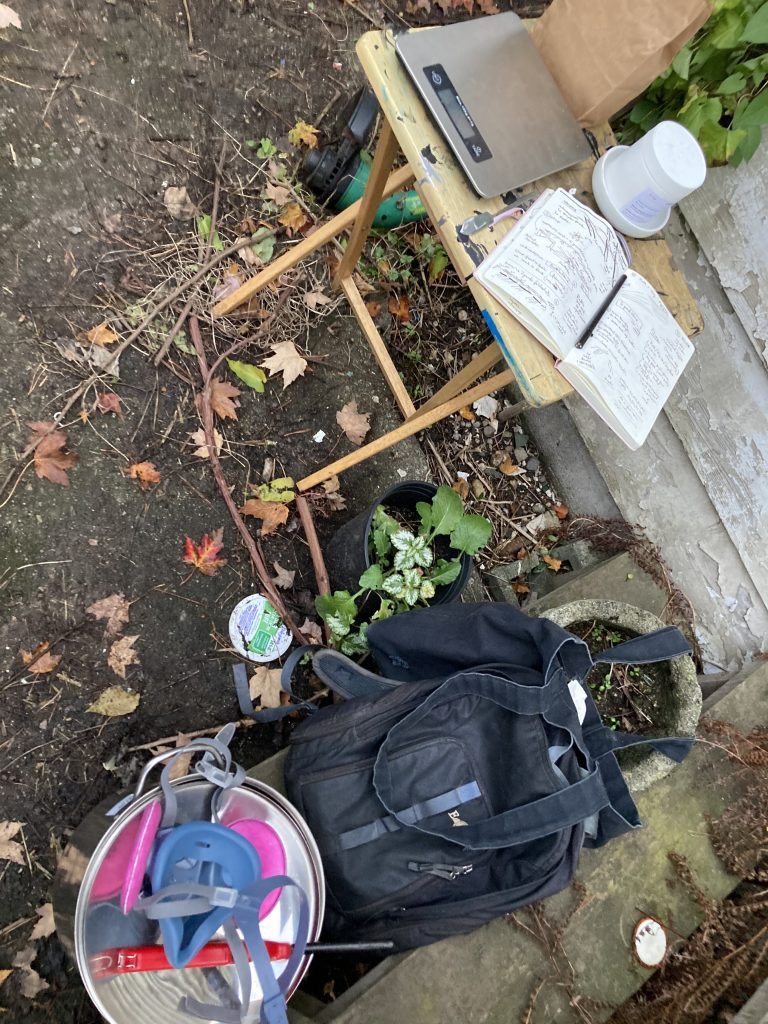

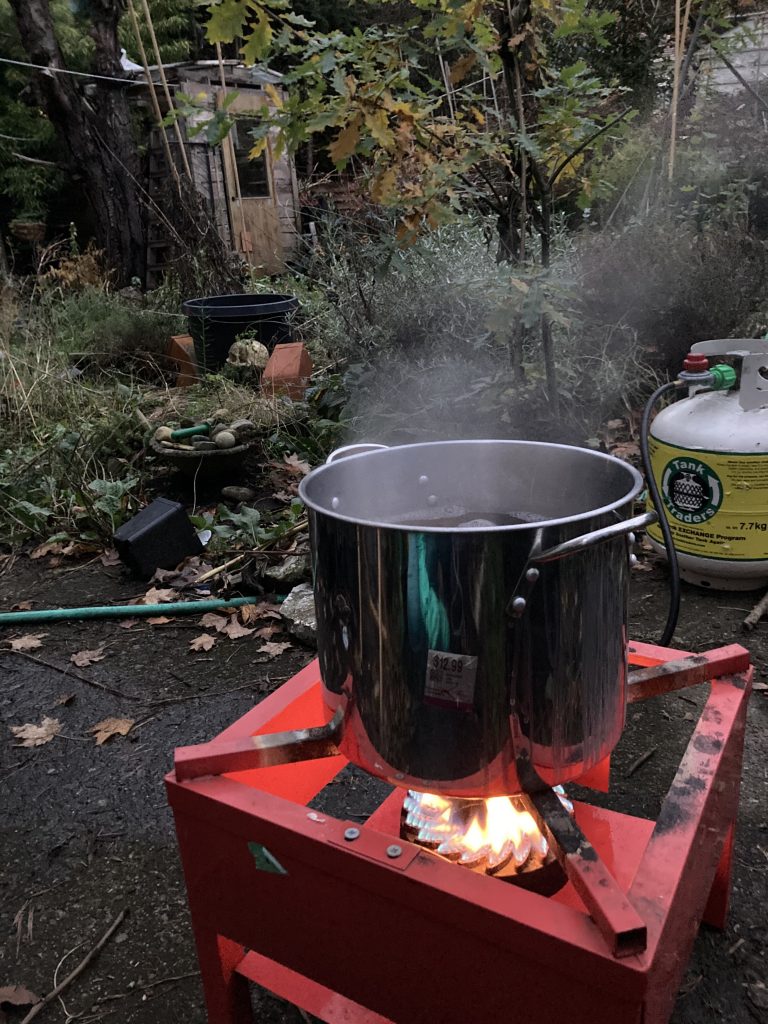
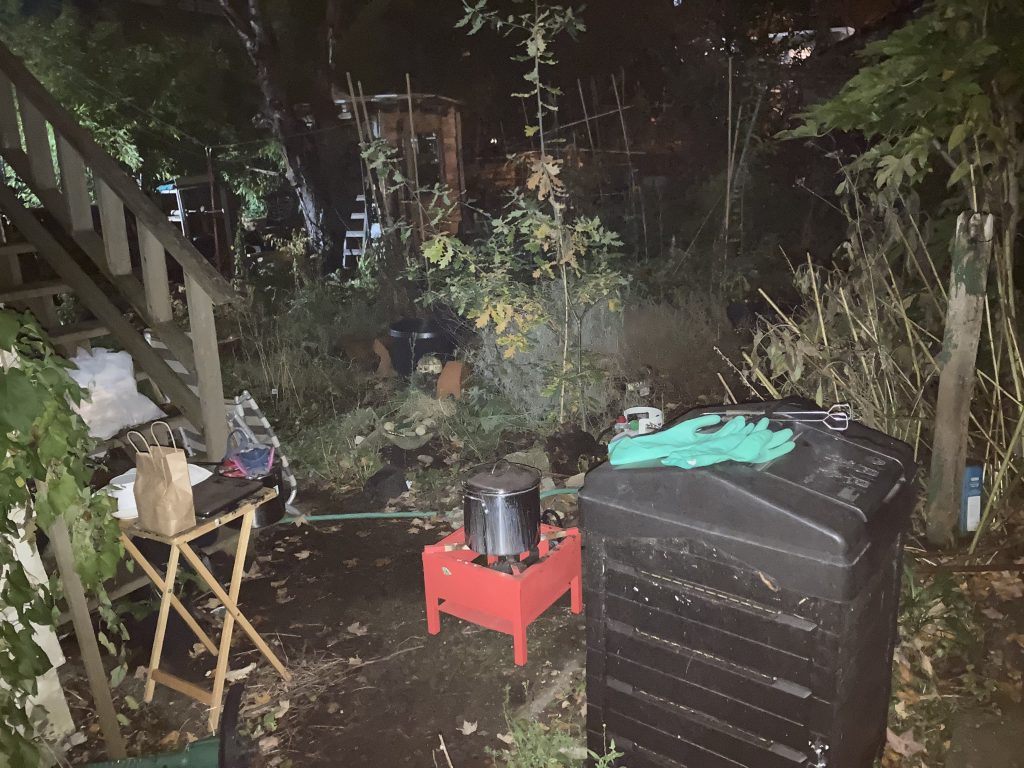
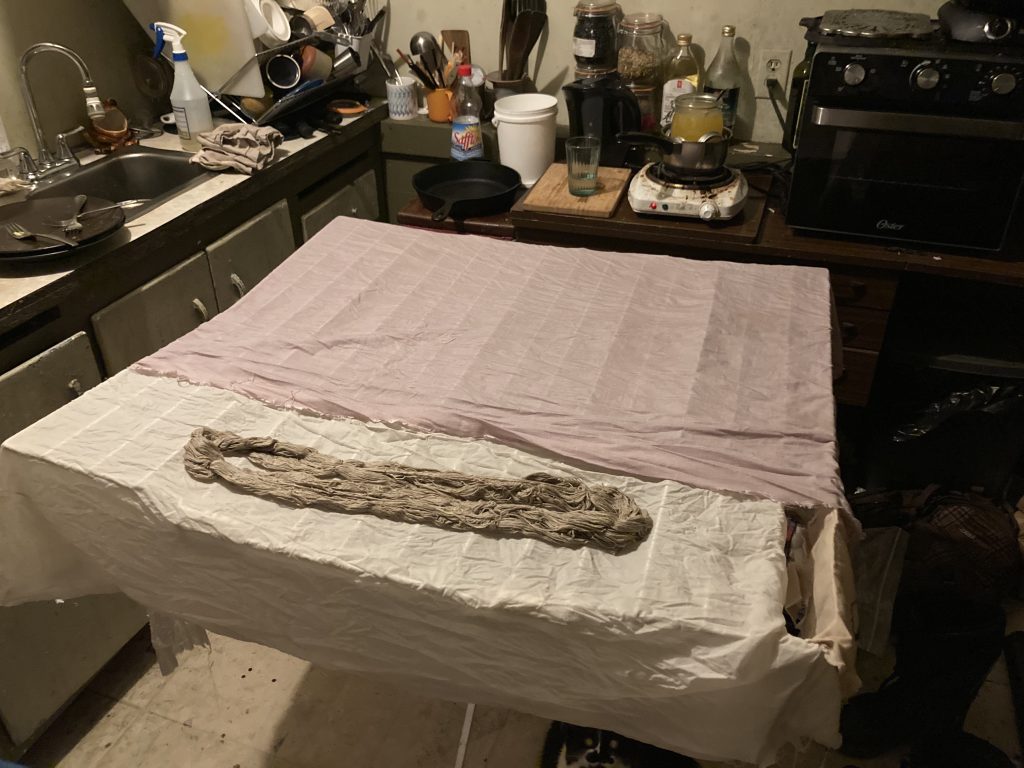
I woke up and the first batch was dry, it was crustier now, not brittle, but had this crunchiness to it. Especially the linen yarn. Maybe I didn’t rinse it enough, but linen gets softer with time, so I’ll just wait and see what happens after mordanting, and the dye bath.
So with all the delays I missed the good weather, it was cold with a heavy rain. I started earlier this time, so I wouldn’t have to finish in the dark, but the wind was strong and the rain was making the pot take longer to get to a boil. So I grabbed a bunch of containers from around the yard to create a wind break, and pulled a tarp out from our camping stuff, stringing it up from the corner of the two houses. Somehow this made it so much more fun, it reminded me of building blanket forts with my cousins at Granny’s house.
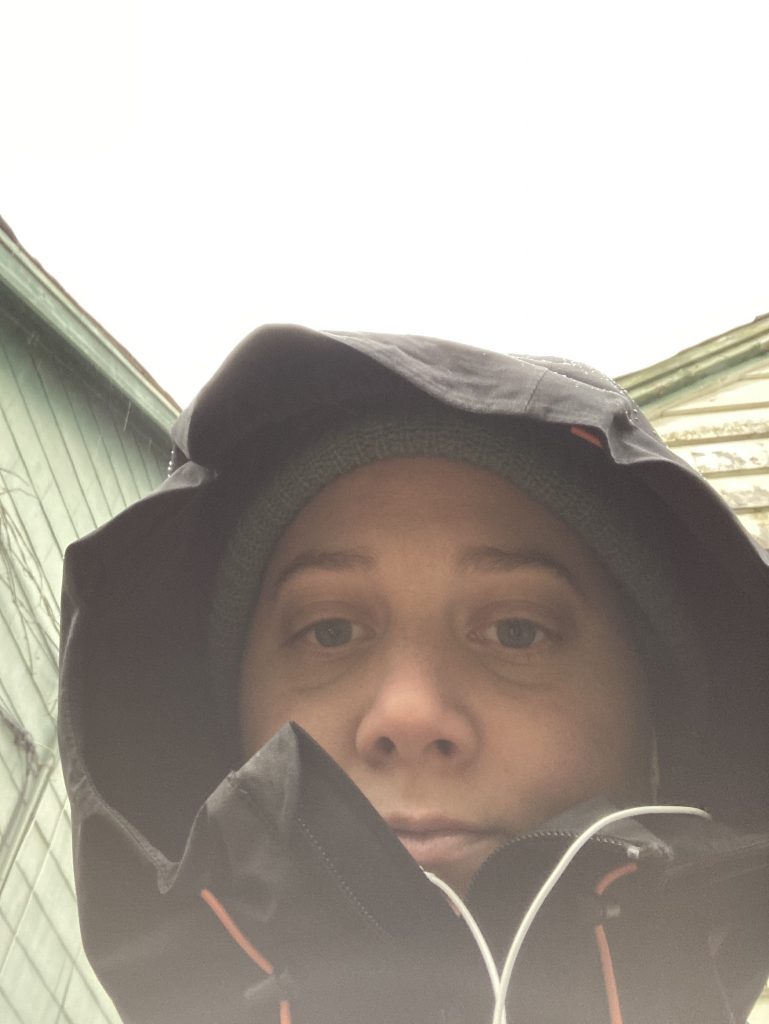
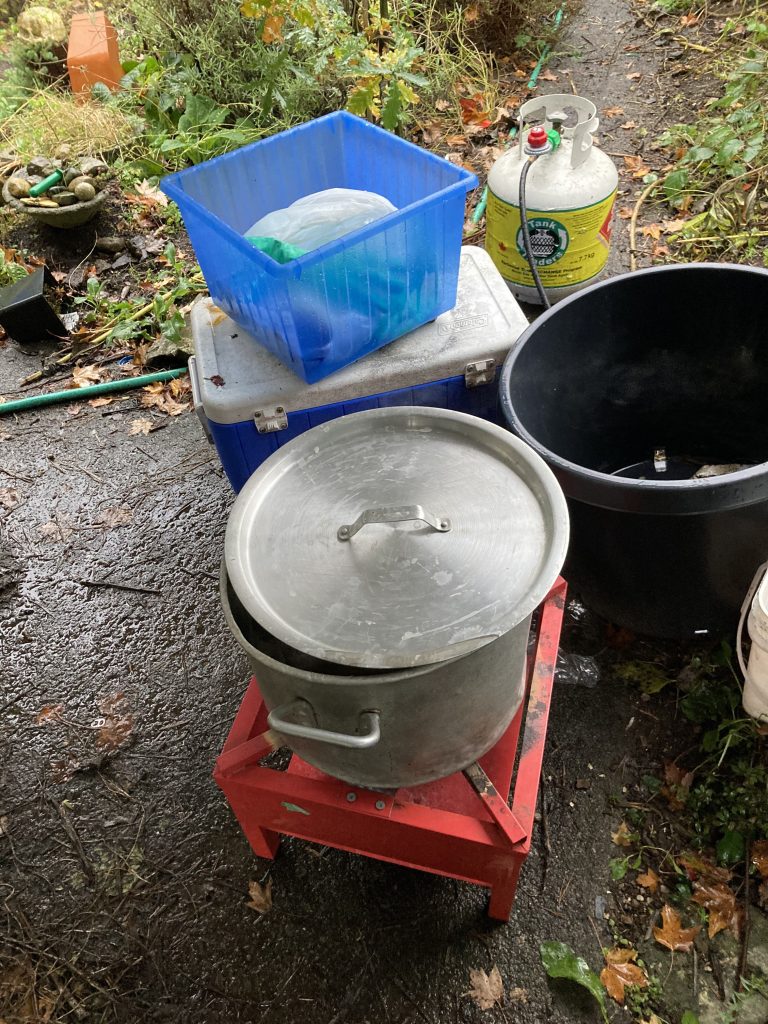

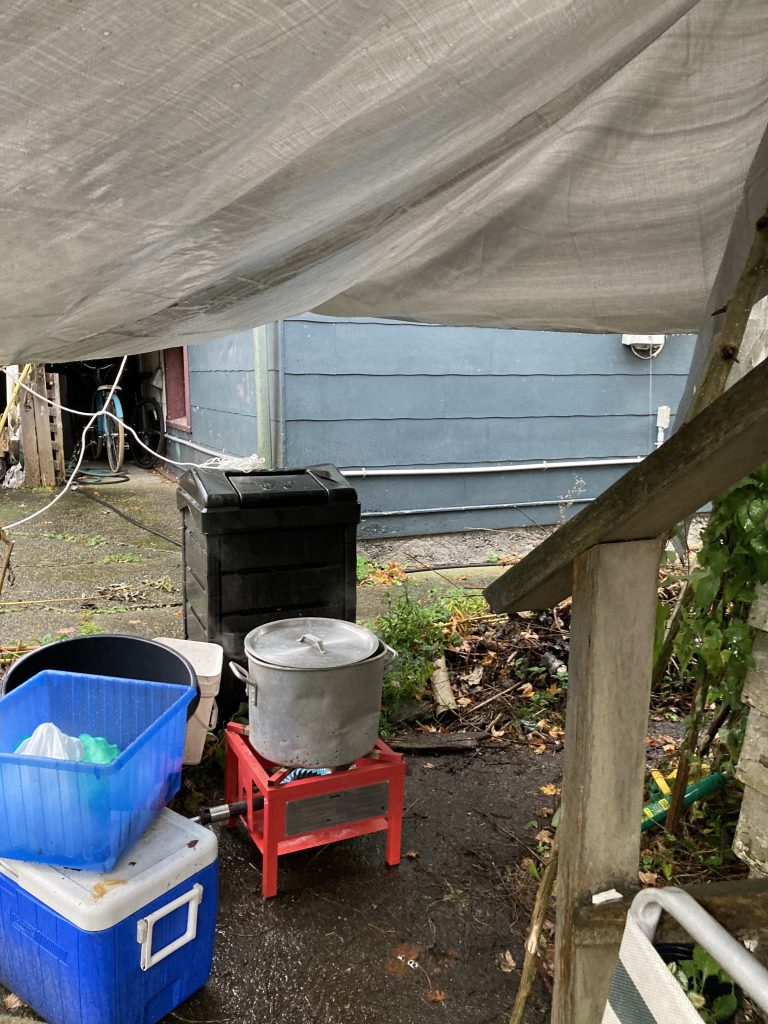

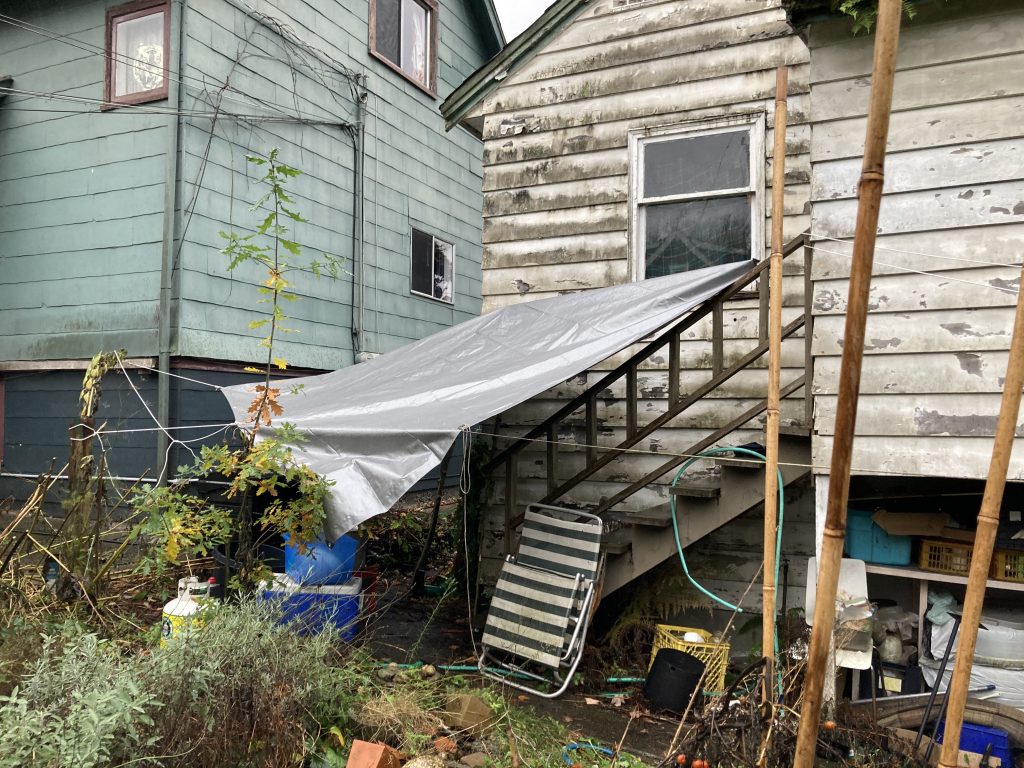
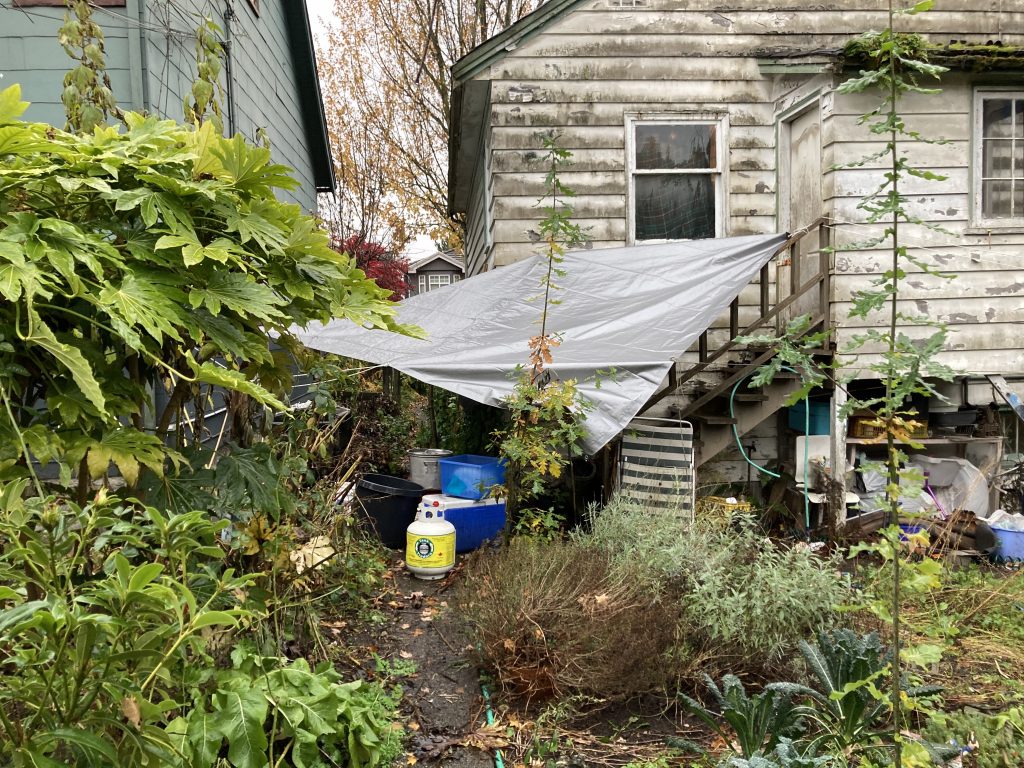
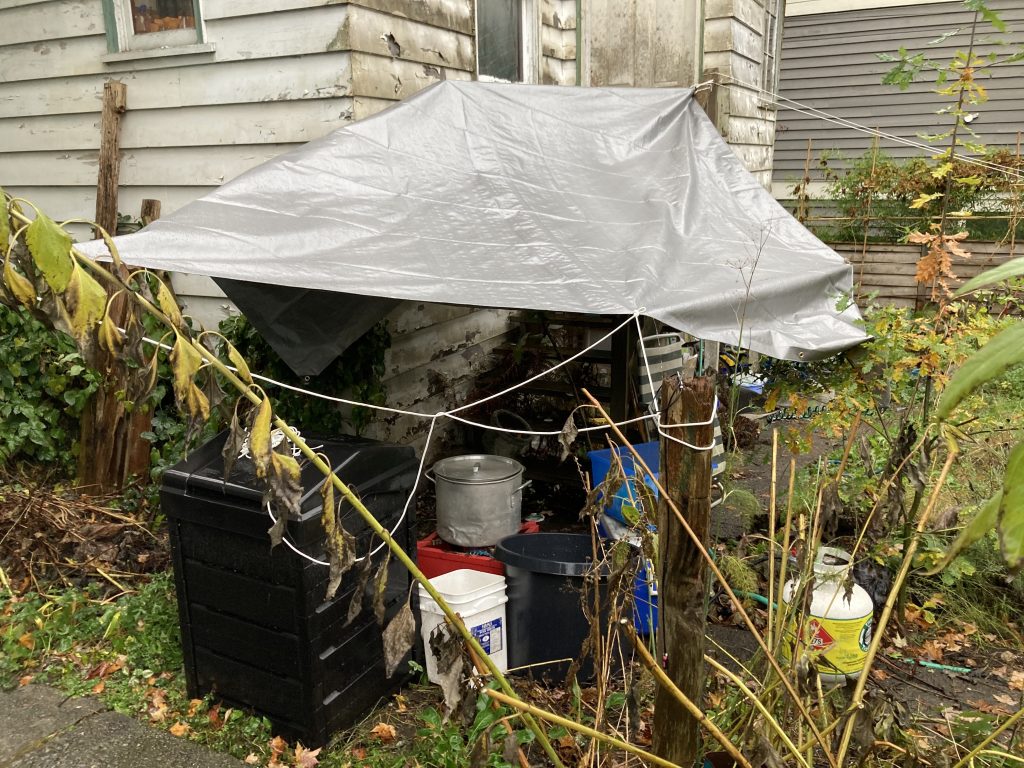
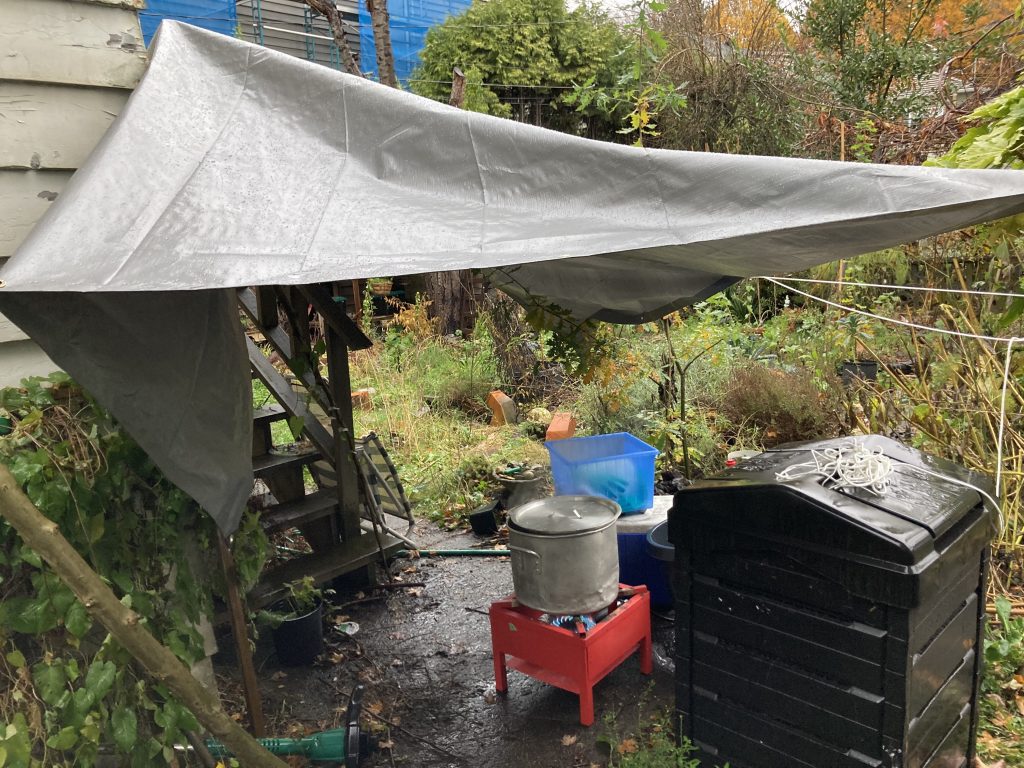
I knew what to expect this time, and felt far more at ease than I had earlier in the week. Again the smell of the boiling fabric was wonderful. I also had Robin Wall Kimmerer’s narration to keep me company. As well as Mimi Gellman’s Braiding Sweetgrass bookclub.

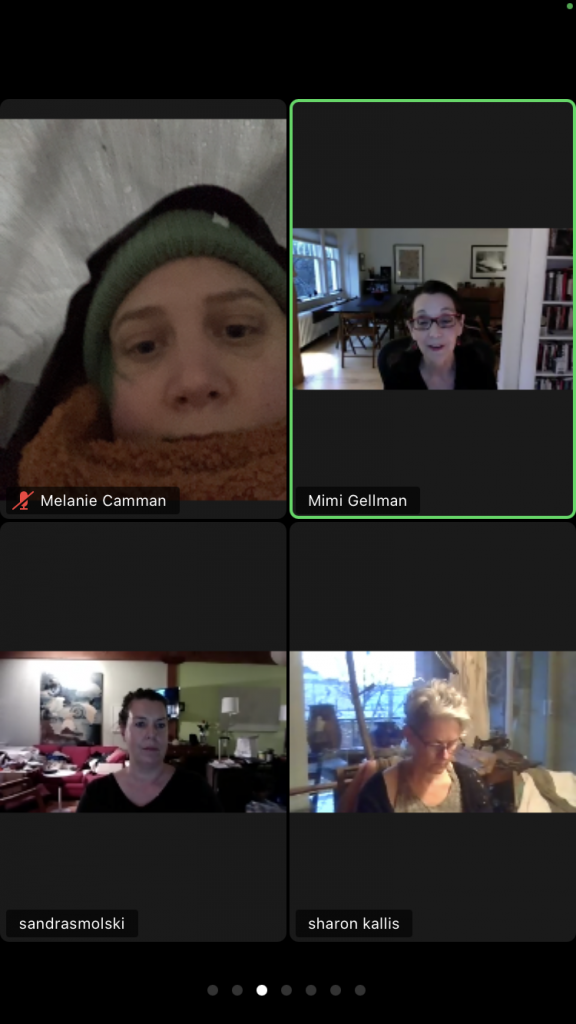
So, this prep was supposed to be done in a day, so I could move on to mordanting and dying all within a week. Why does everything take longer than I expect it to? I was disappointed that I didn’t get to the fun part, the colour. But on reflection, I decided it was good to curb my expectations, to allow the process to take the time it takes, and to adjust my plans as things unfold. I forget that inexperience is a factor that slows everything down, but also slowing down makes the experience more enjoyable. I had fun this week. I felt good about what I achieved. Listening to Braiding Sweetgrass while outside doing the work felt more meaningful than it had in previous weeks. I had done the invisible work, the unexciting part, and when it is time I will be ready to add colour to the cloth. Well, actually I still have to figure out the mordanting process. I wonder what else would be categorized as invisible work, and when I encounter this kind of work, will I remember the lessons I learned this week?
The loom arrived this week. My mom sent me her Dorset floor loom for my birthday this year! I am so excited. I think I may have to take a break from the dye project while I get the loom set up!
This was a turning point for me, there is nothing super significant in what I did this week, other than I left the house. For the past few weeks, I had been stuck at home, operating in a 5′ x 7′ space. This week I walked. I took my phone with me and snapped some photos, I took a bag with me and collected things: acorns, needles, mushroom spores, pokeberries, madder root. I walked and I saw, and I stopped, and I collected, and I met people. Mostly still through zoom, but it was a week of engaging calls: DESIS, Design Justice Network Vancouver, I keep encountering another Emily Carr student named Morgan on all of these zoom calls I am attending. I made it to Mimi Gellman’s Braiding Sweetgrass book club, I attended Leslie-Ann Noel’s guest lecture in Dimeji Onafuwa’s class on the pluralverse. I started to feel connected again and that I was on the right track. Oh, and I got mail, Jenna’s zine series – Atrocities Against Indigenous Canadians arrived, I ordered the whole series again because I had given away all the zines I ordered last time. I have to remember to get out and walk more. I also met Sharon Kallis from EartHand gardens. She was attending Mimi’s book club too and described the Means of Production Garden. By her description, I was pretty sure I knew which one she meant. So the next day I went to check out the garden at China Creek Park near the school. It was great I met another Emily Carr student as well, Naomi. Sharon has great energy and was really receptive to my questions and inquiries. I explained that I was trying to understand colonization and decolonization by working with flax, she didn’t bat an eye. It turns out she works with flax, hemp, nettles and more, spinning, weaving and knitting with them. She also grows the materials for fabric and natural dying in the community garden. I stumbled upon a group of people already doing the kind of work I wanted to be involved in.
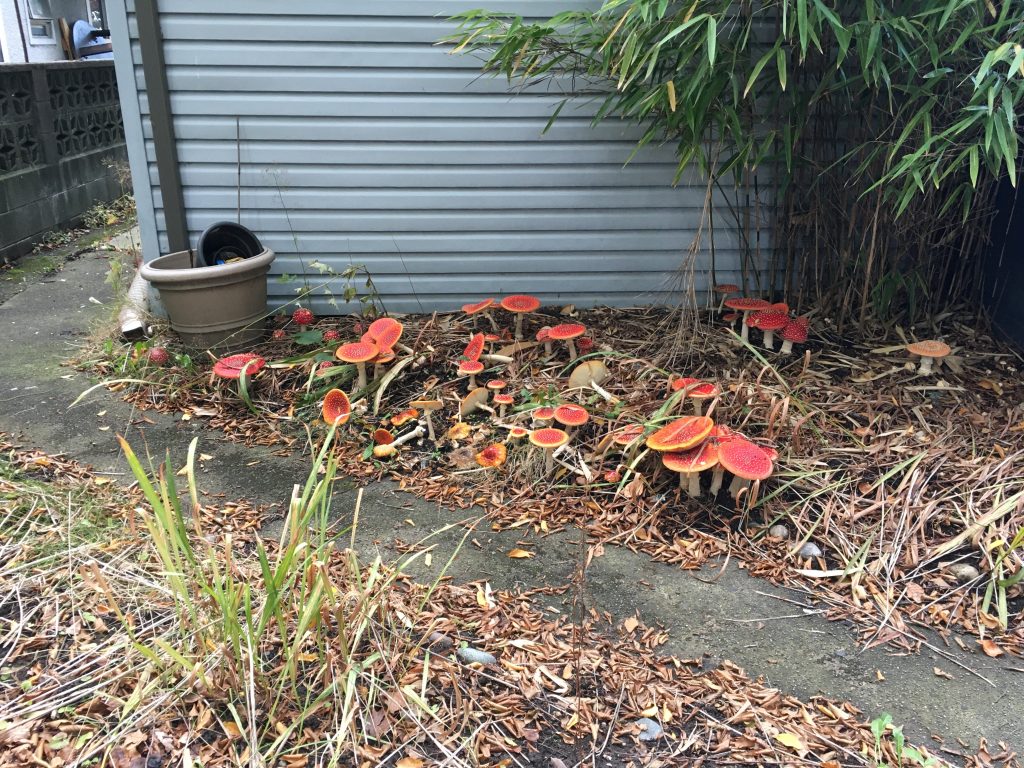
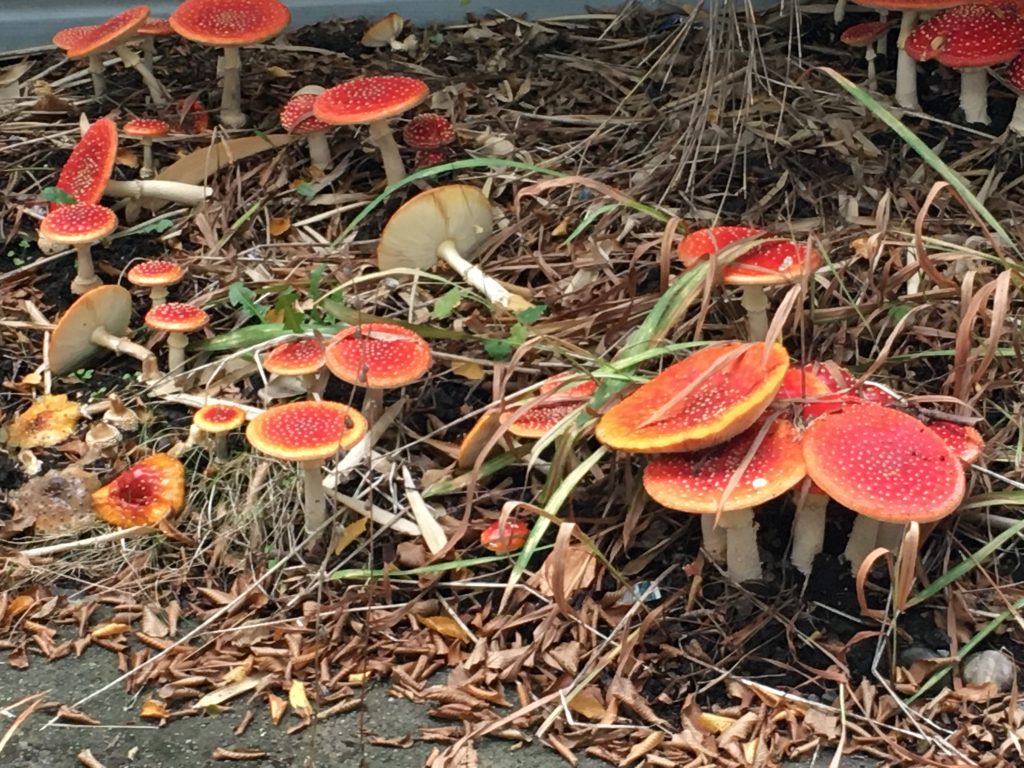
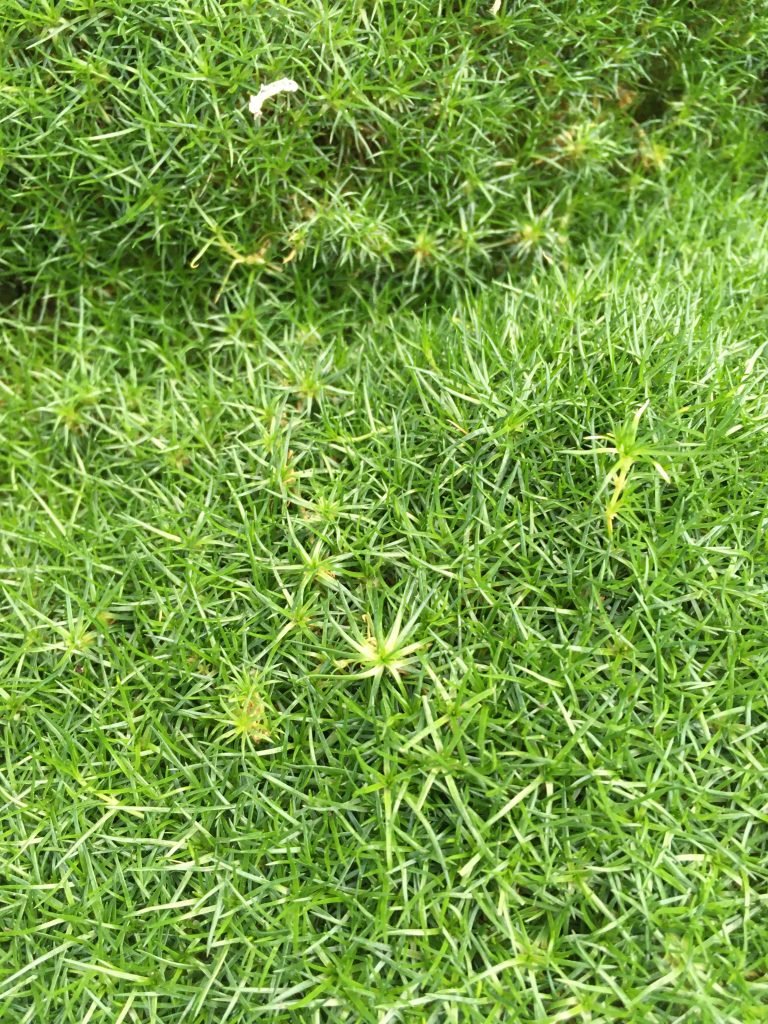
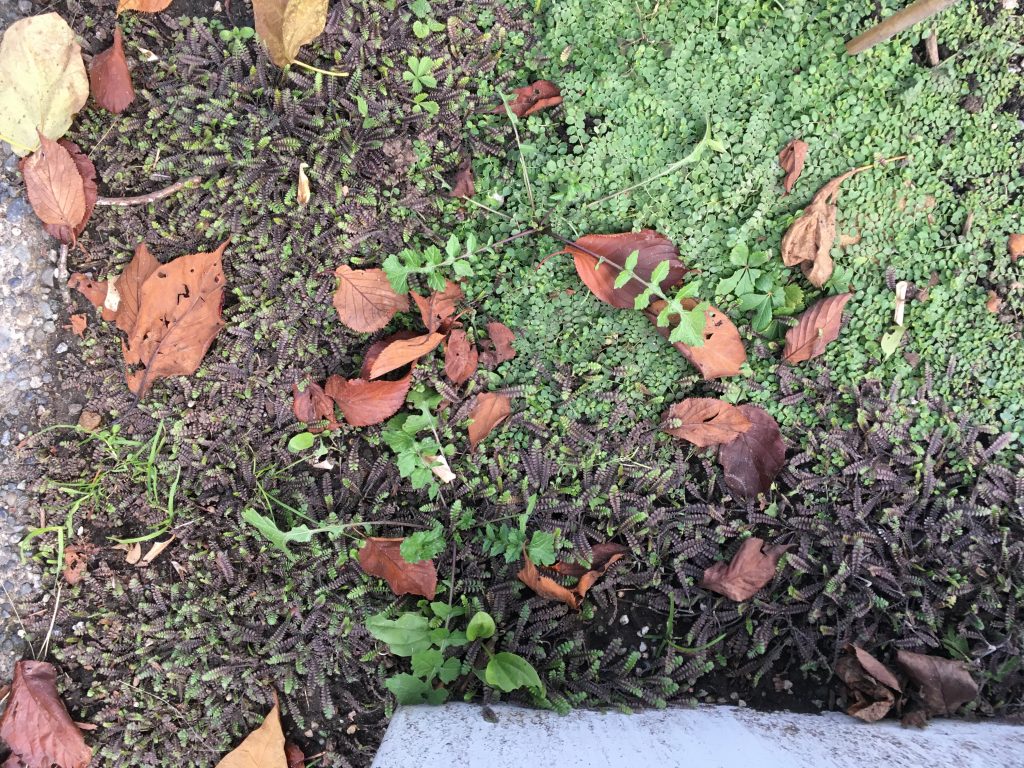
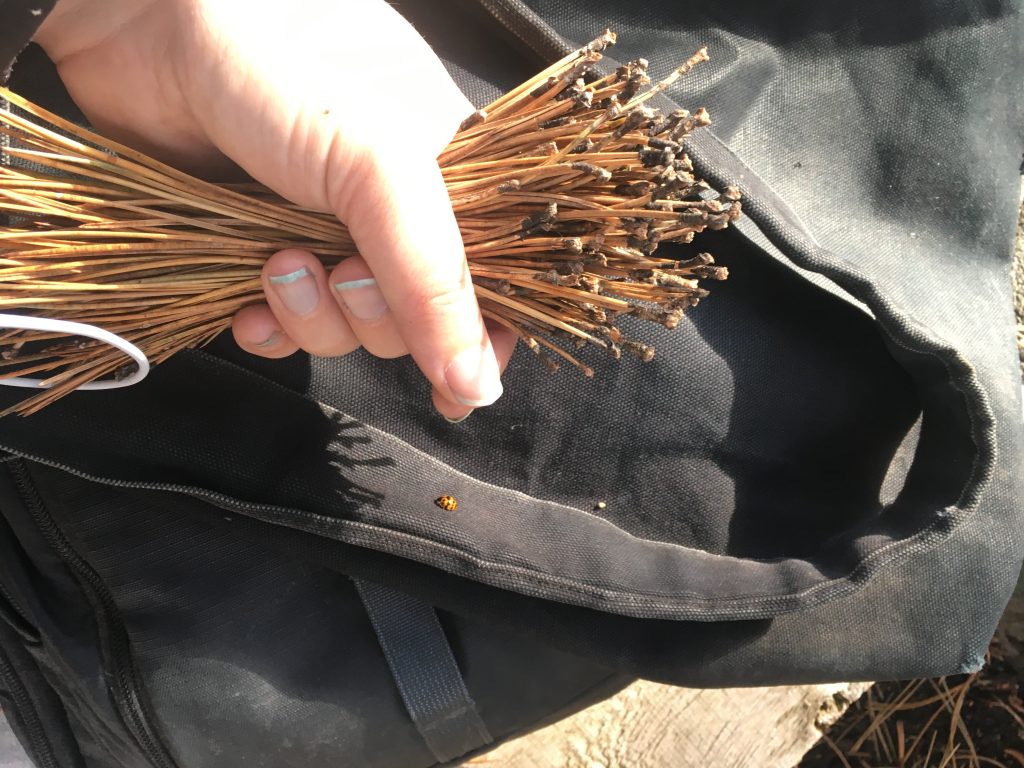
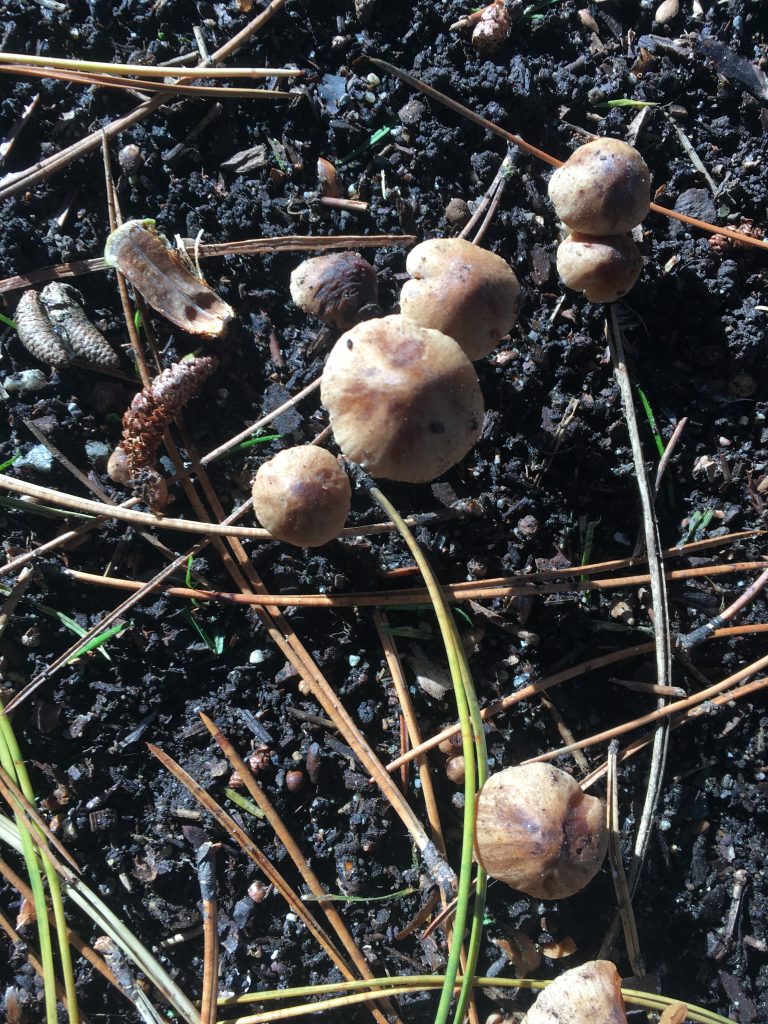
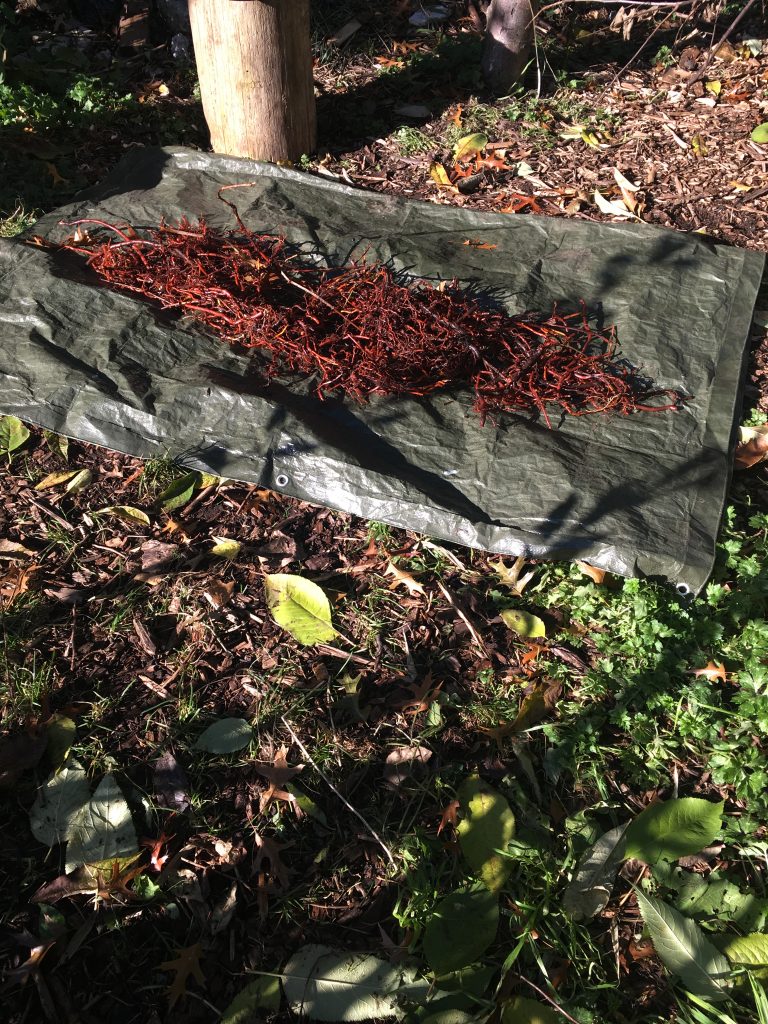



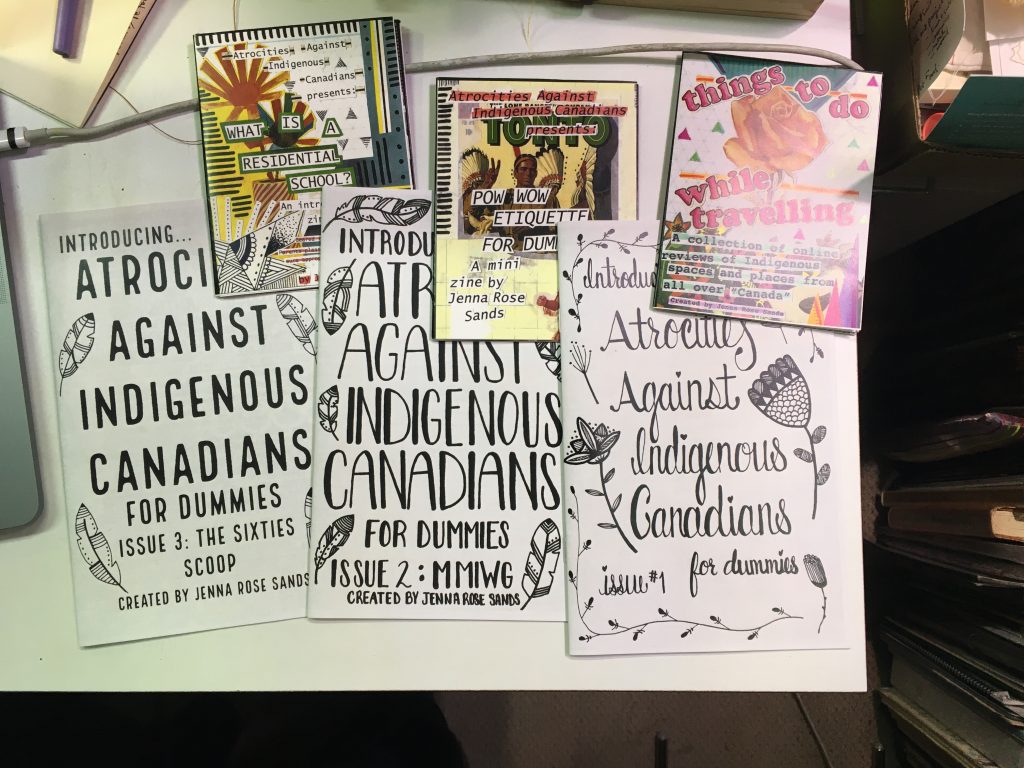
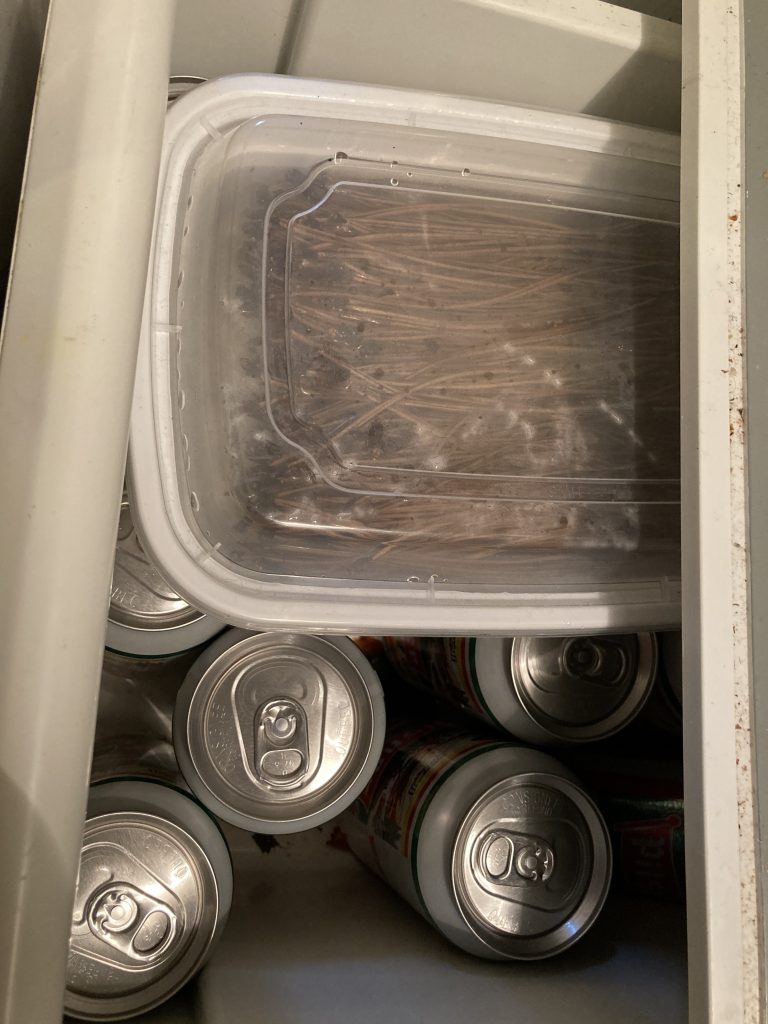

When you are feeling stuck, just get up and go out for a walk. Pick up the phone and call or text someone. Or walk to a friends house just to say hello. The world will open up, and you will have positioned yourself where you need to be to see the opportunities. Also, Lesley-Ann Noel had so much to share. Go look up more of her work and lectures.
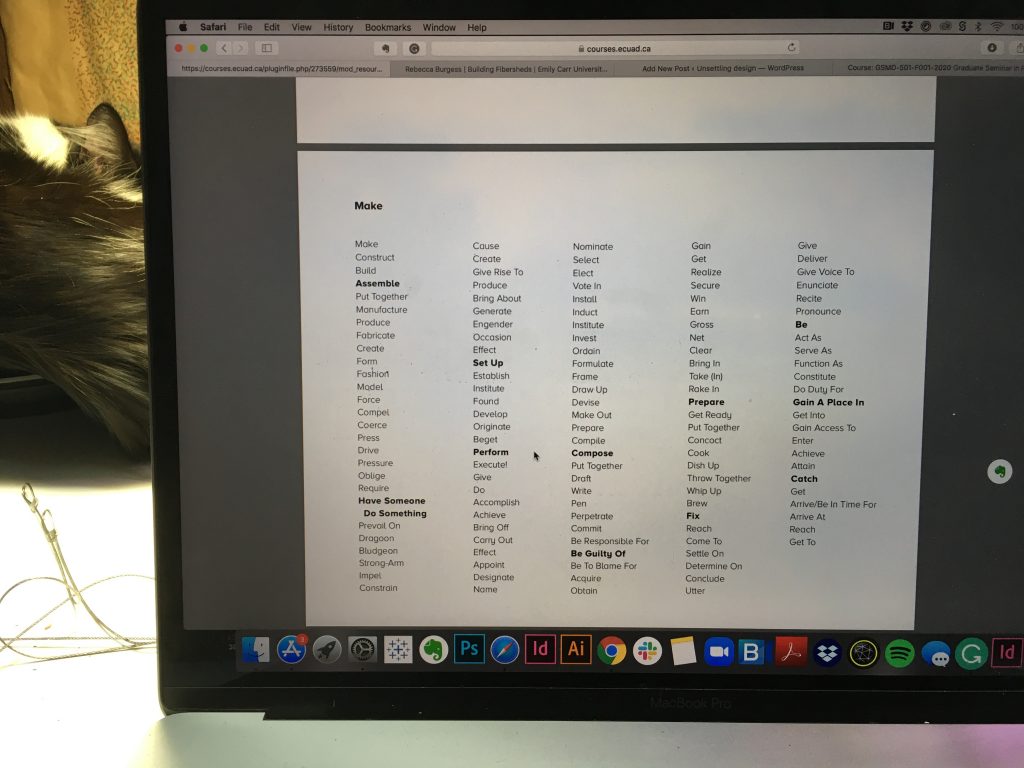

I discovered in action 4, that I was not satisfied with the definition of making, or the role of the designer as a maker. That language shapes the way we perceive the world and the way we act within our understanding, and so I began to redefine the terms of what a designer does. This week I began to explore what it would look like to act out those words.
It’s that time of year, the weather is cooling off, and it is time to get the plants back inside before the first frost. During the transition time I like to give the plants a re-set. I look for bugs or disease and try to treat it or trim it out. I give the leaves a nice shower, and sponge them down. removing any dirt or build up, and I like to repot them, washing each pot as I go, giving them fresh soil. Nomi loves to hang around when I am working with the plants. I think she likes the sounds and the smells. She also prefers to drink water from the saucer instead of from any of her water dishes.
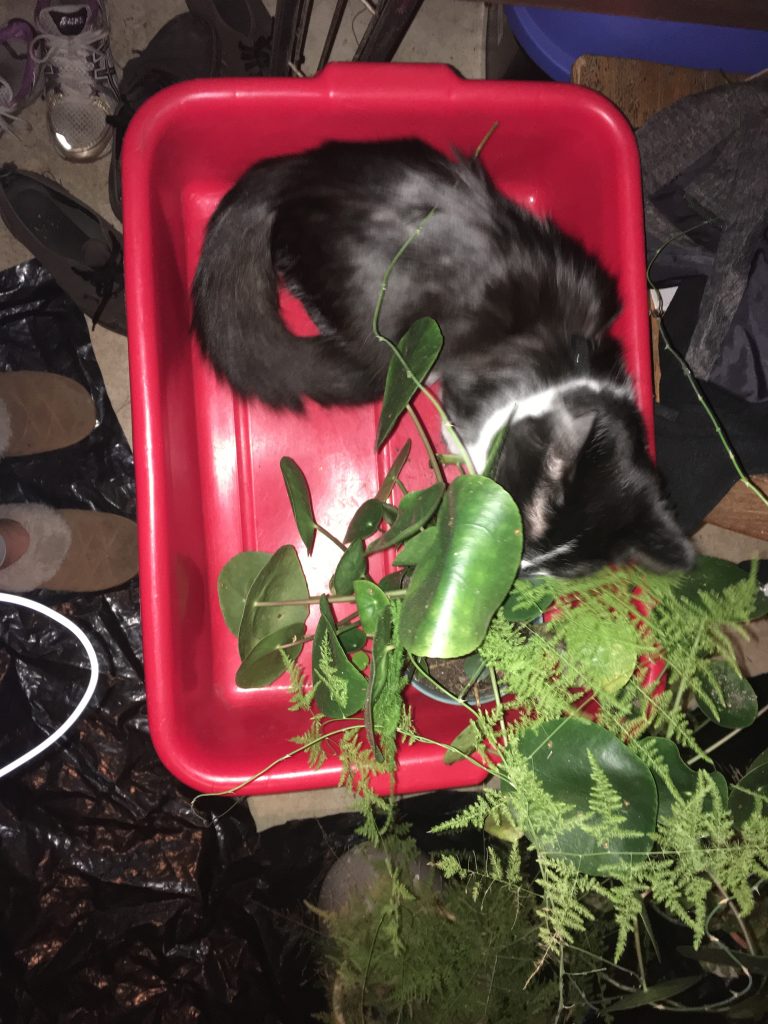
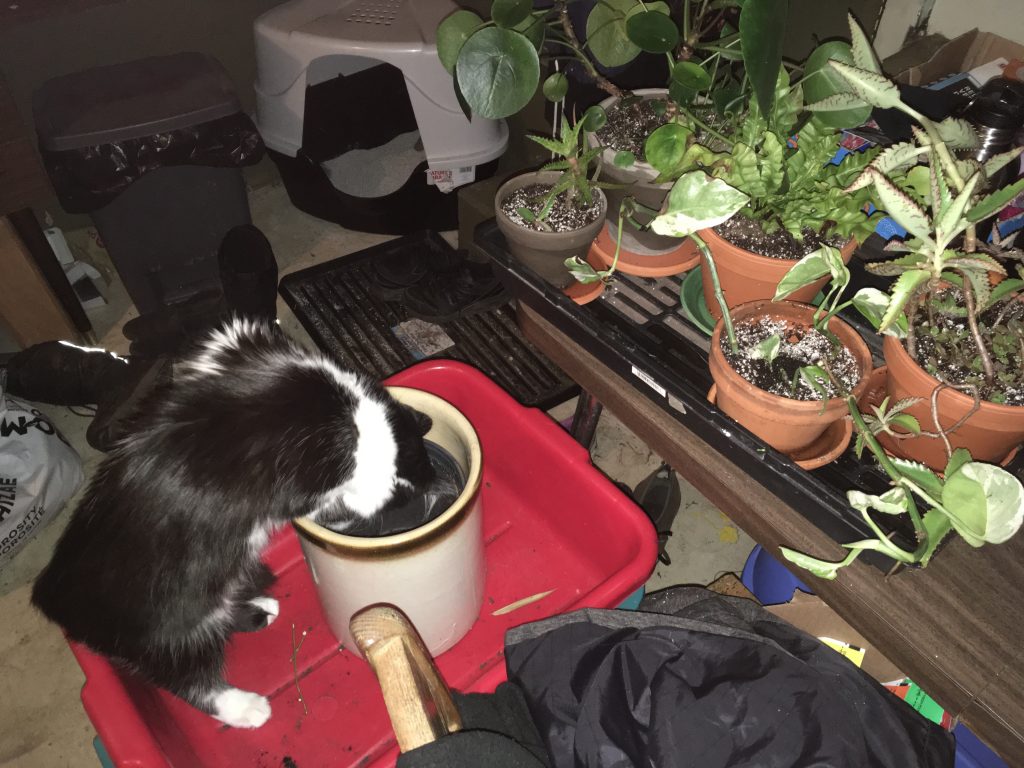
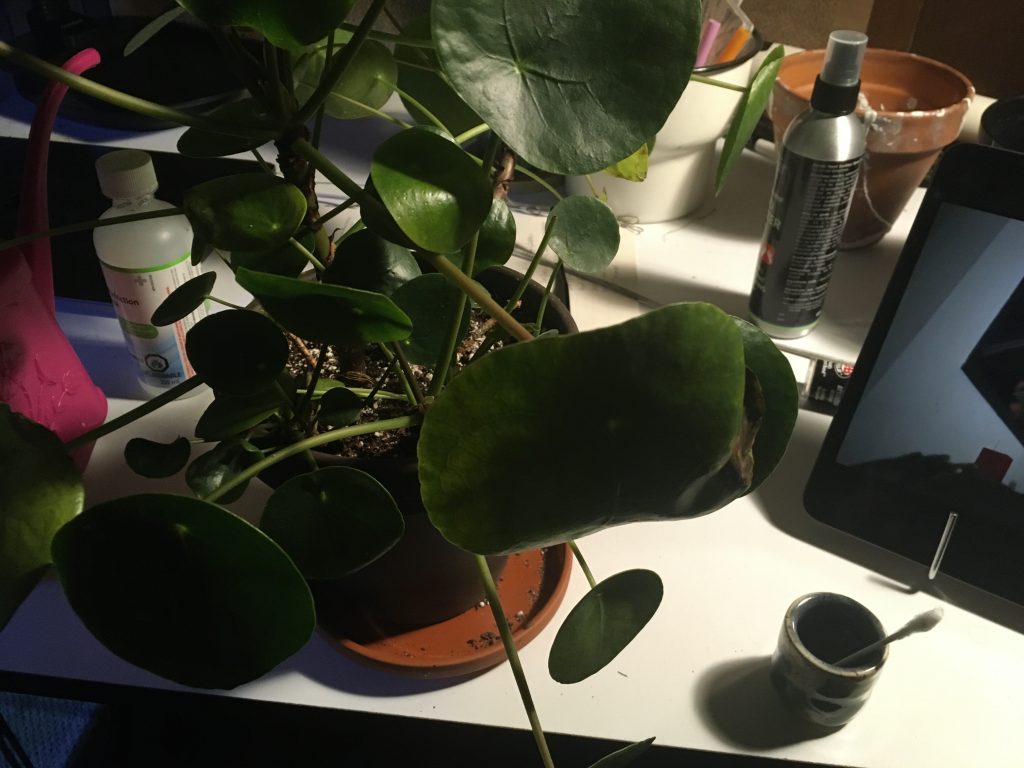
Next, I tried out the action/word repairing, I took a pot I broke the day before, and got some aquarium safe epoxy from the hardware store, and tried to put the pot back together. It reminded me, and everyone I showed, of the Japanese technique of Kintsugi. I was really happy with the aesthetic of the repair. I also enjoyed working with the epoxy putty, even though the smell reminded me of burnt hair, and it was sticking to my fingernails, I was afraid to eat chips after because the epoxy residue might mix with the chip flavour and come off in my mouth. But, I wasn’t sure if the pot needed repairing. If I had disrupted the life cycle of a pot by putting it back together again. I can’t communicate with pots. Did I take away its autonomy by assuming the pot wanted to hold soil and roots and moisture once again? Nomi was pretty fascinated with the result, so maybe I was still on the right track.
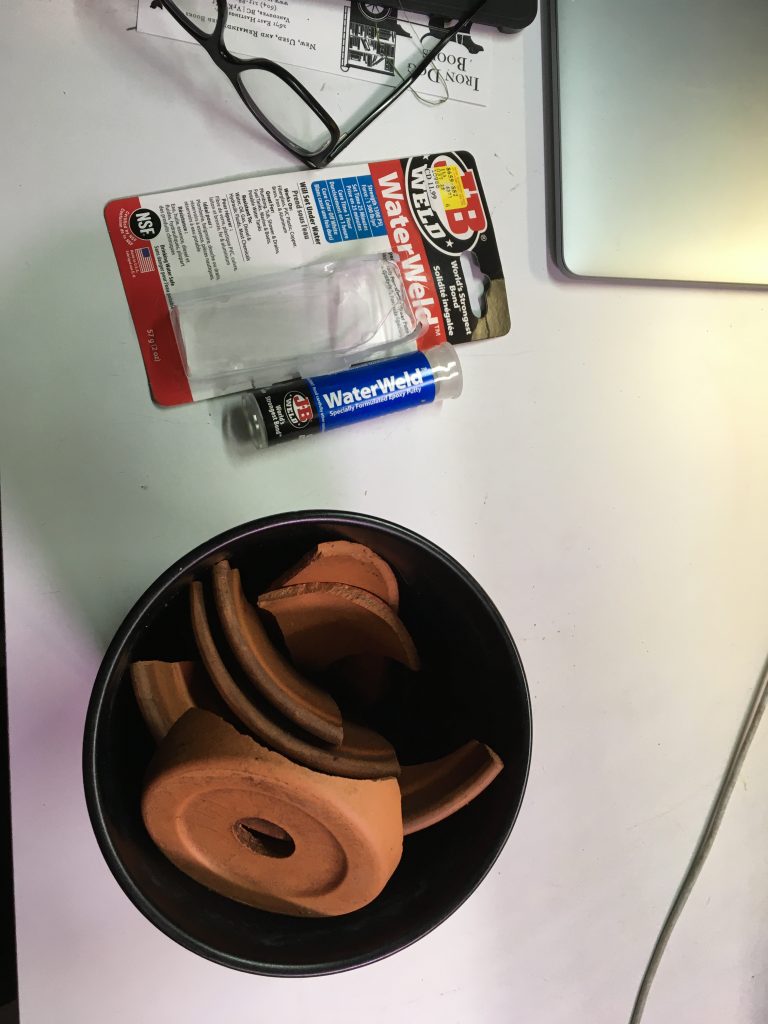
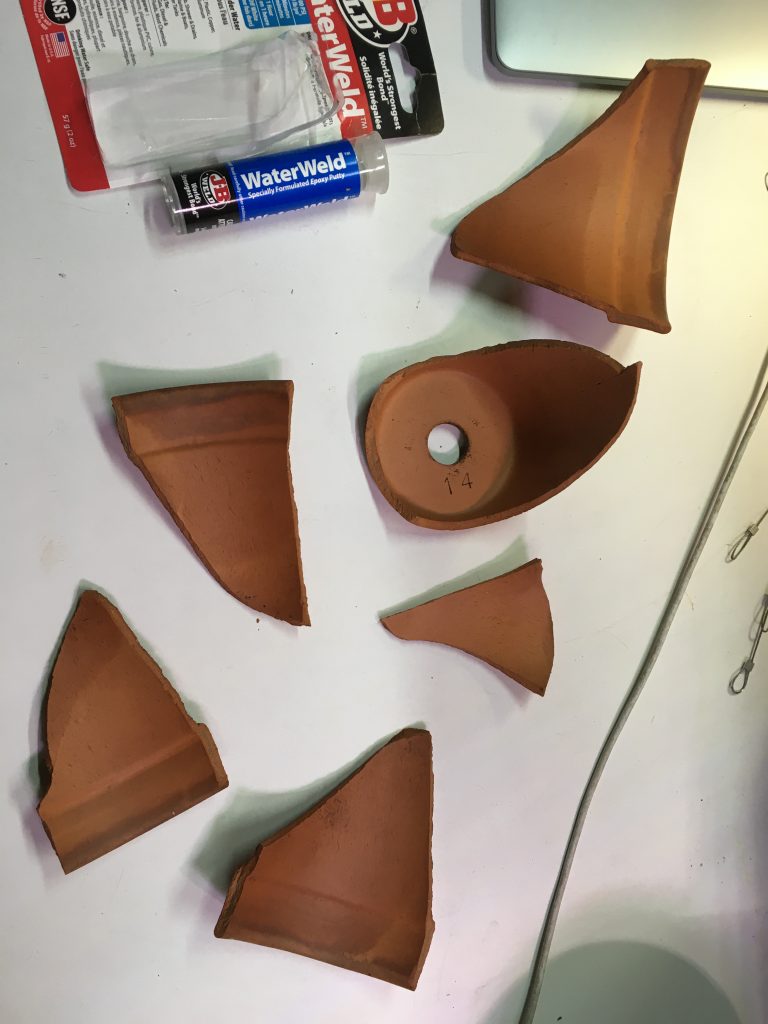
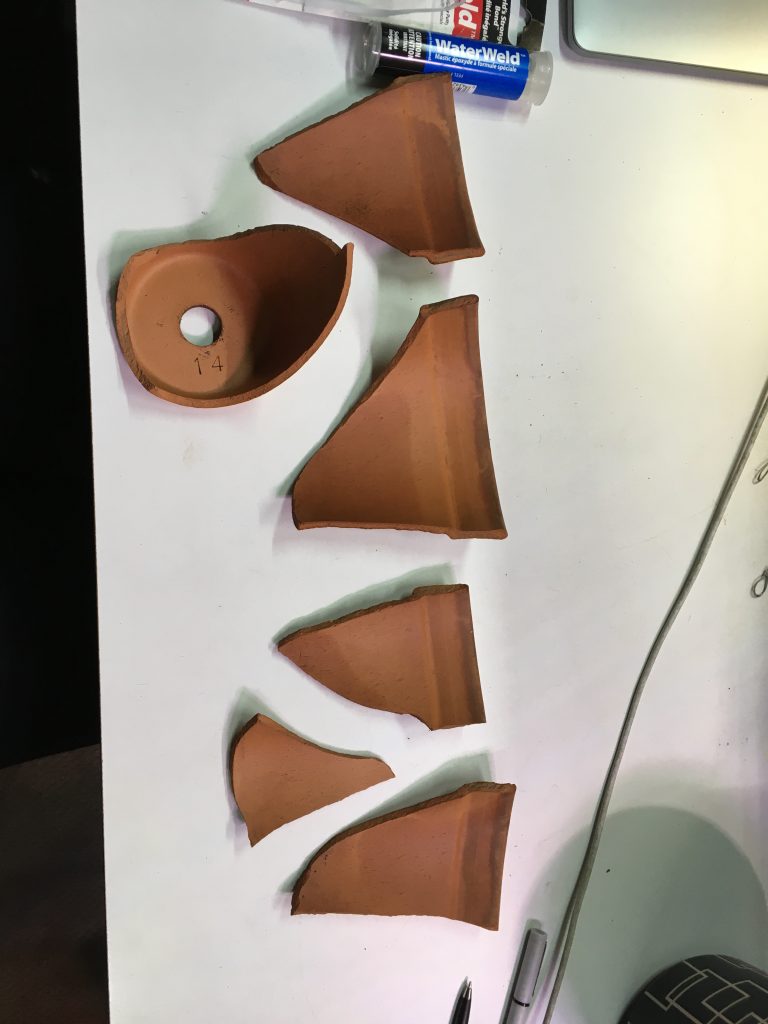

I have this lovely blanket my granny made for me when I moved out west to go to university. It was one of the last ones she made. All the grandchildren got one after we were born, and around the same time she made this one she did one for her great grand-duaghter Olivia. Granny used grampa’s old pants for this one, and embroidered plant vines and leaves. I love this blanket and decided to put some time into mending it. This was the most rewarding action of the week. I was worried that my patches would take away from the blanket, but instead it added more value for me, I liked the way the patches became embellishments. I like that there was no pattern to the moth holes so the patches would be irregularity spaces, and I was learning how to embroider for the first time which made me feel even more connected to my granny. Working on the blanket made me think about my granny, so I called her up for a conversation. She seemed to be doing better than the last time we spoke. I was glad to hear her voice.

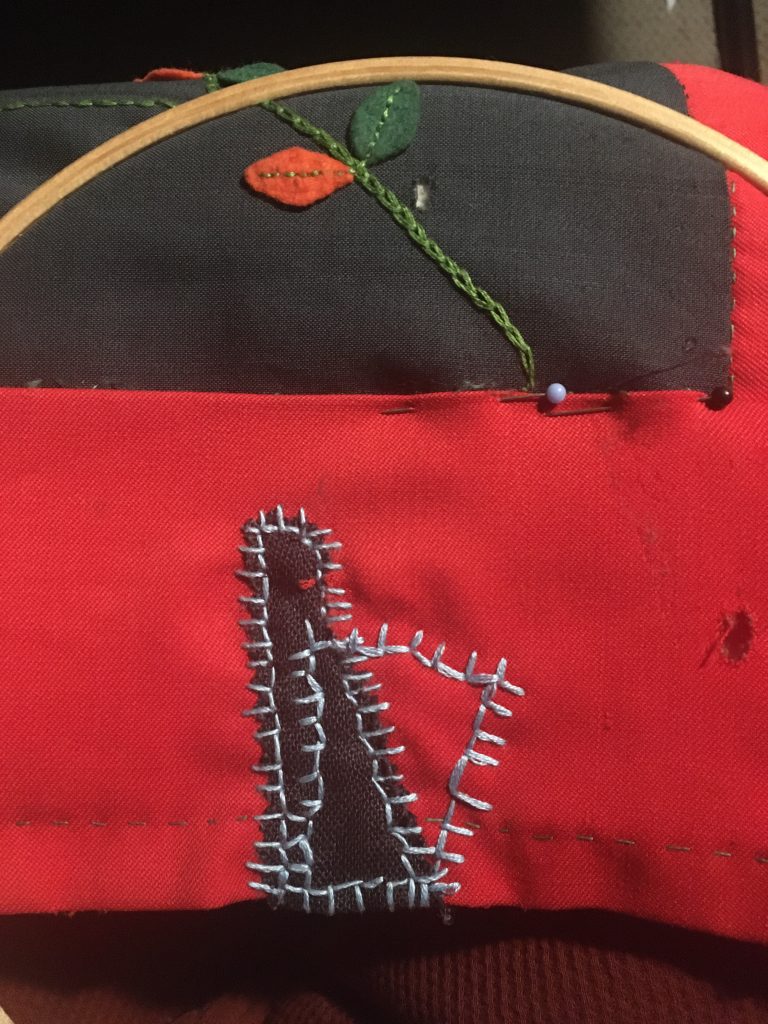
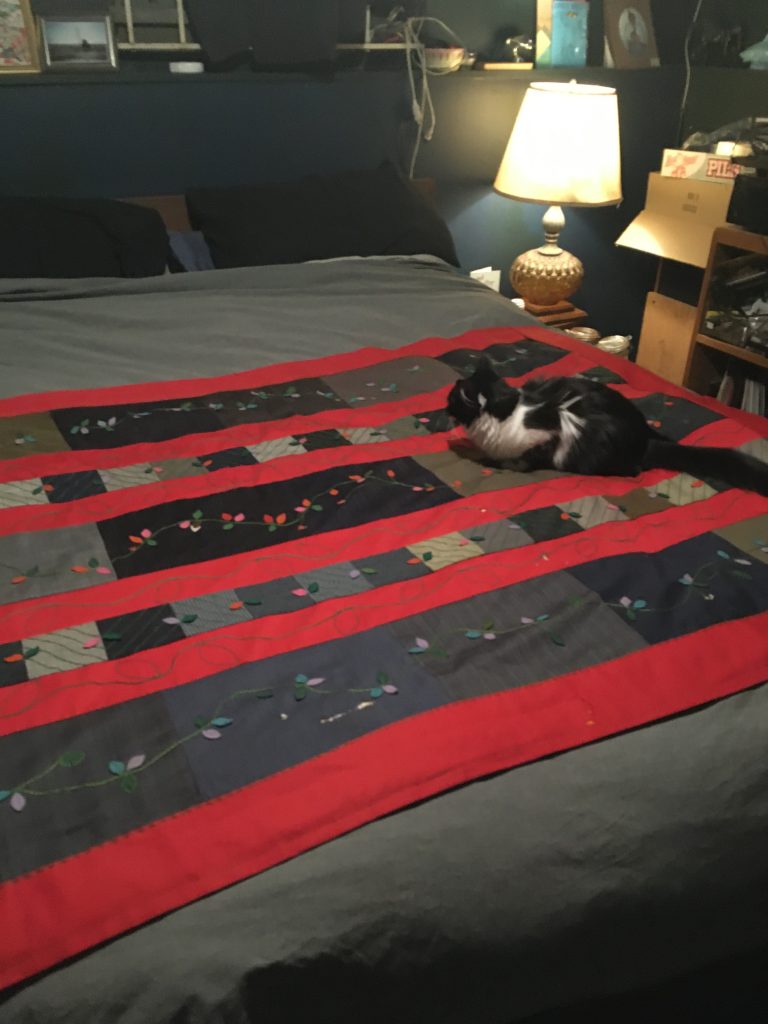
I am not sure where this action left me. I don’t think I got what I was hoping to out of it. My thoughts still feel unresolved. Perhaps I just need to do more. Or approach it differently. I’d like to see what happens when I plant that pot if that will change how I feel about it. I will definitely keep working with the moth holes in grannies blanket. Taking care of the blanket made me feel closer to granny, and knowing that she is 93, and that because of covid I may never get the chance to go home to see her again, well it felt significant to build on her work, and maintain this connection between us.
Note: grampa passed away several years ago, but I used my own trouser material for the patches, so maybe I am connecting with him too in a weird way.
So this one was fun, but I definitely didn’t go with my initial ideas…. I have been looking into pre-colonial practices and ways of knowing from the Netherlands, Scotland, and Ireland, and I keep bumping into the notion of tree beings, invisible people, gnomes, or tree spirits. It’s something I always believed as a kid, and I thought I was appropriating it from Icelandic culture, but it turns out there are similar beliefs all over Europe. So I thought I would make a film about that, still might, and definitely wish I had, but time pressures hit and I shifted into something a slightly more concrete. Instead I explored the idea of what my design practice might look like after I am done the masters program at Emily Carr, using the sketches as a speculative fiction, hoping to better understand what I am practicing for.
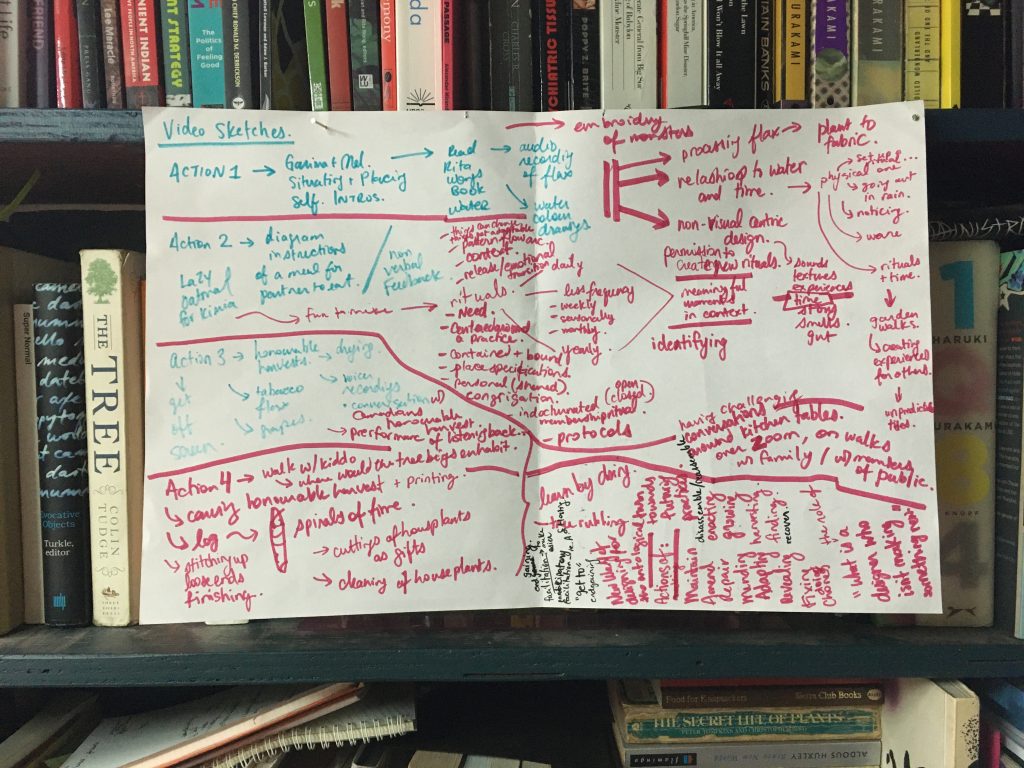
I started by reviewing the work I had already done in previous actions, and then pulled out a few threads I wanted to keep exploring. I got the final idea when I went back and re-read the PDF on Ways of Making from our course resources. I was struck by how forceful the definitions were. I was reading the colonial nightmare: coerce, compel, force, prevail, strong-arm. So I started making an alternate list that answered the question, what is a designer’s work if they are not making new things. Then for the sketch, I chose a few to illustrate and put together a shoot, my kind sibling mustered up their high school drama training and deserves much credit for playing the role of design client in my imaginary, futuristic, plural-versal, one-stop, design shop. aka. the 4′ x 6′ space between shelves in the living room, that is my classroom, gym, office, dance studio, library, art/design studio, which I am also sharing with the loveable kitten Nomi, and approx. 26 houseplants.





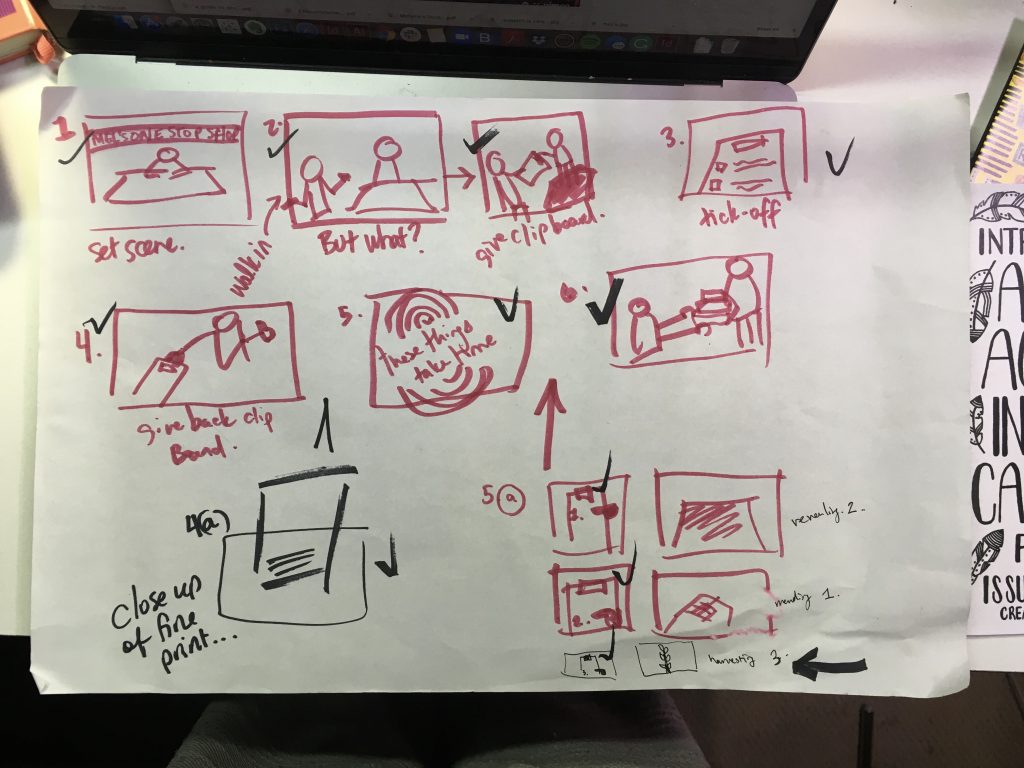
The second video I tried based off some feedback I received from Zach about exploring how I might define ritual. Originally I wanted to show several rituals, but in a way where you could see what was common, and what was unique to each of them. In the end I choose the disco workout. Mostly because I had to embed so much ritual into it, to create the motivation to shift my behavior towards being a person who works out in a steady kind of way, instead of my preferred states of either doing a lot of a physically strenuous activity, or moving very little, staying cozy, comfy and close to home. This was also an nice build off ACTION 2 – where I show both my lazy and active side through my oatmeal routine, and where I first started to realize there was a ritual aspect to my approach. Zach had also said something that stuck in my mind, that maybe I didn’t have to focus on creating a product with my explorations, but that I could focus on creating experiences for people. I guess that is something to keep in mind for future actions, how can I create actions for others to enact, and is that something I want to do, given that I want to be exploring power dynamics in participation.
When I started exploring rituals I did notice some particulars that were in all of them. For example, I usually had a type of clothes I would wear that was suitable for the routine – workout clothes for sweat, loose drapey old clothes for gardening that didn’t matter if they got dirty, kept the sun off my shoulders and included a belt for holding tools. There was an element of external cueing I would use to start the action – timer for the lights shuts off indicating bedtime routine. Bill’s March birthday indicating planting time. My October birthday initiating the closing of the garden and the bringing in of houseplants. There was a seasonal element, a knowledge of the indicators from other plants and animals, forsythia are blooming, put out the mason bee cocoons, the countdown till august when the bindweed really takes off, unless I pull all spring, then it never gets too crazy. Or how to extend the weeding season of the buttercups by ripping off all the flower heads every few days, giving me enough time to dig them out by the roots before they spill seeds everywhere making my entire weeding effort moot by the following year. There is also the kitten factor – Nomi initiates most morning routines with first a cuddle, but when that’s over for her a scream in my face, not because she wants food, but because she wants to ensure I will get up and walk her out of the room, and if I go back to bed she will return an hour later to scream again until we have kitty playtime before morning class!

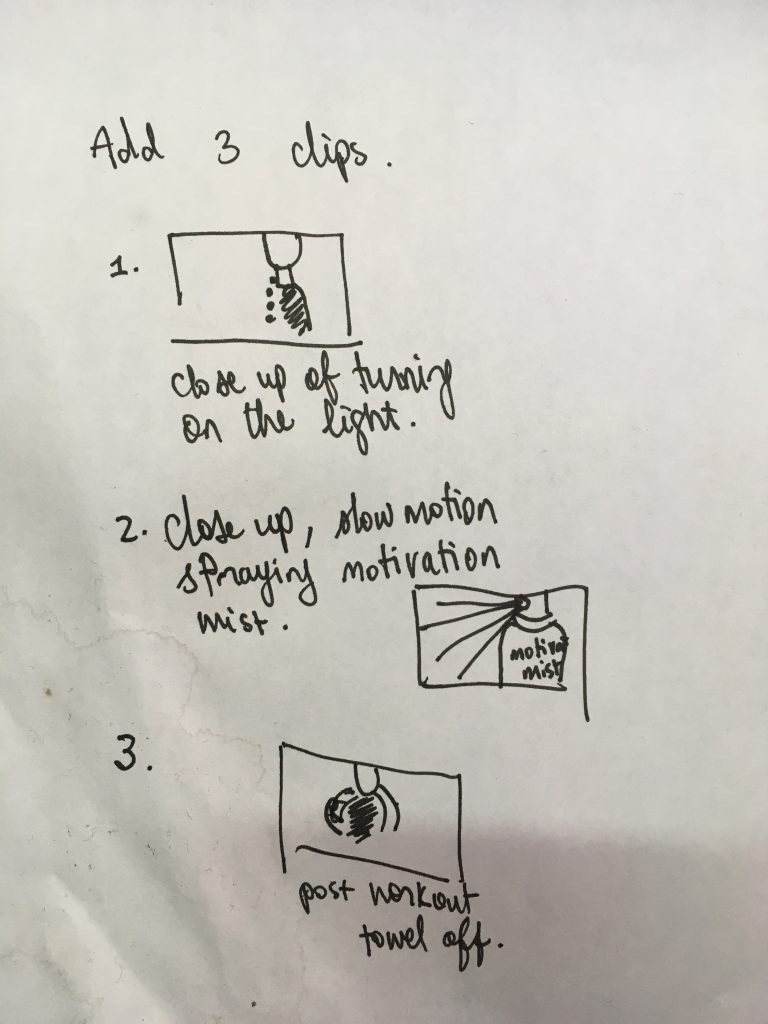
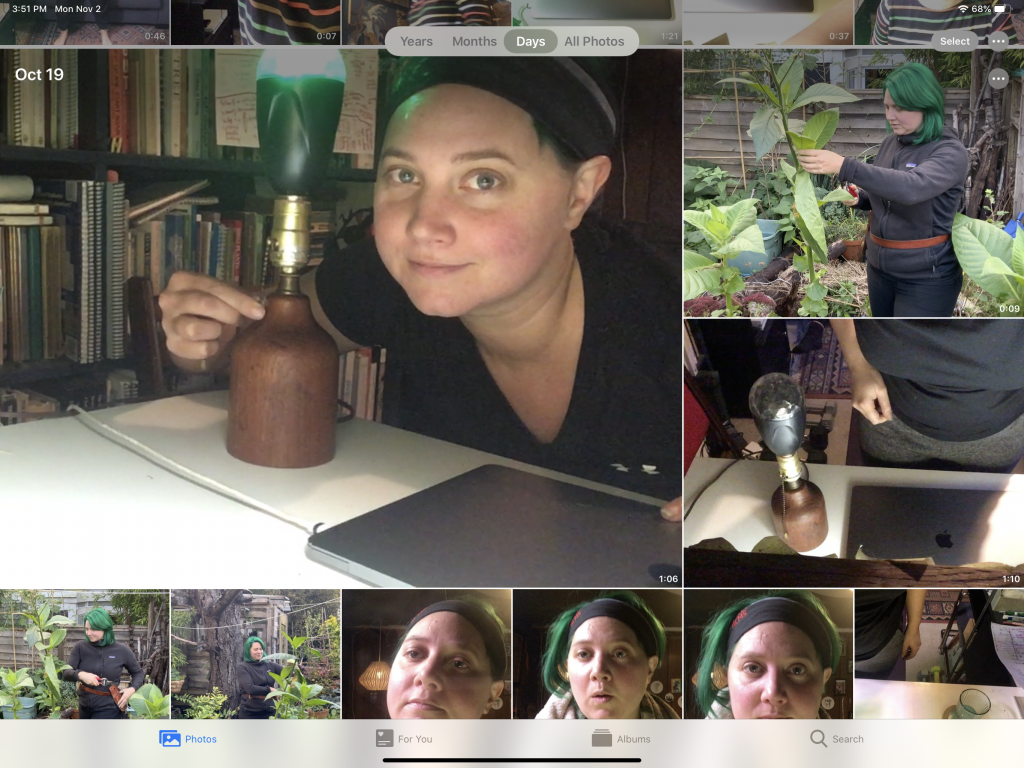
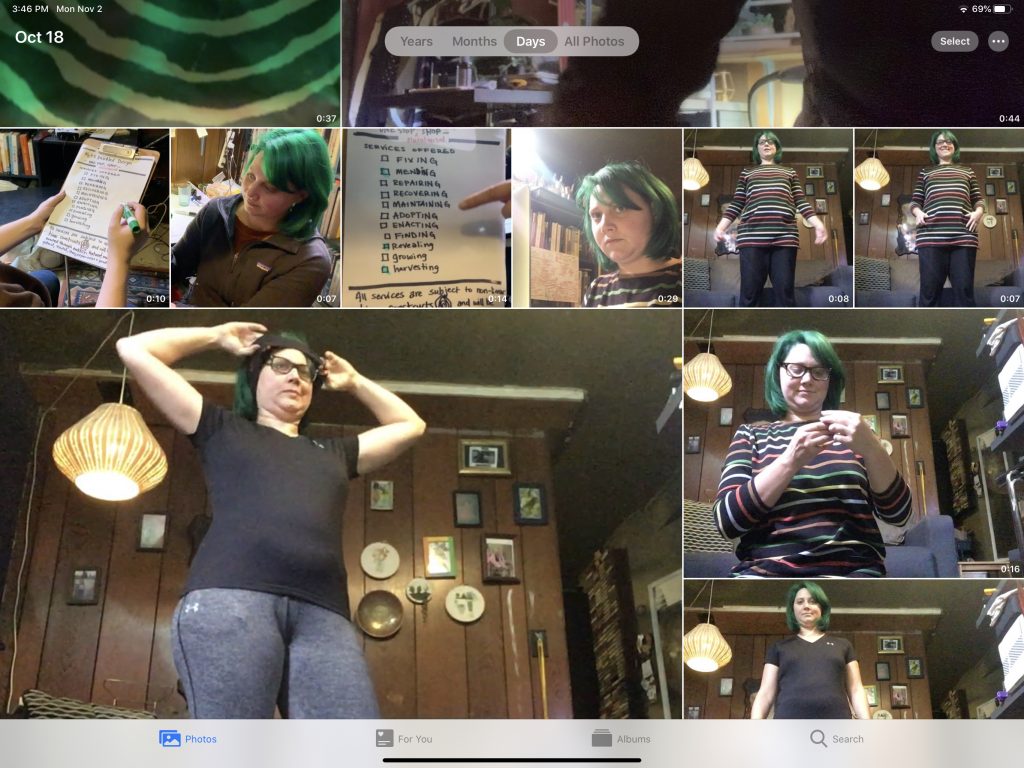
Finally, I wanted to include here a bit about the soundtracks for my videos, they are both by the artist Sylvester, a gender-fluid, black man, immersed in San Francisco’s queer nightlife scene. Sylvester’s music is for celebration and is a tonic for trauma and dark days. So dig in and enjoy.

Thank you Sylvester. So grateful for the music you put into the world.
After the emotional energy I put into Action 3, I found the directions for Action 4 hard to follow. I had already expanded so much, that I had the urge to contract not to go out… I attempted to do some experiments but was not very satisfied with the results, so I also left this one unfinished, and open-ended. I have had it playing on a loop in the back of my head this whole time. Here’s where I ended up with it. And I couldn’t have been too far off track, because Nomi was really into what I was doing, and that usually means I am on the right track.
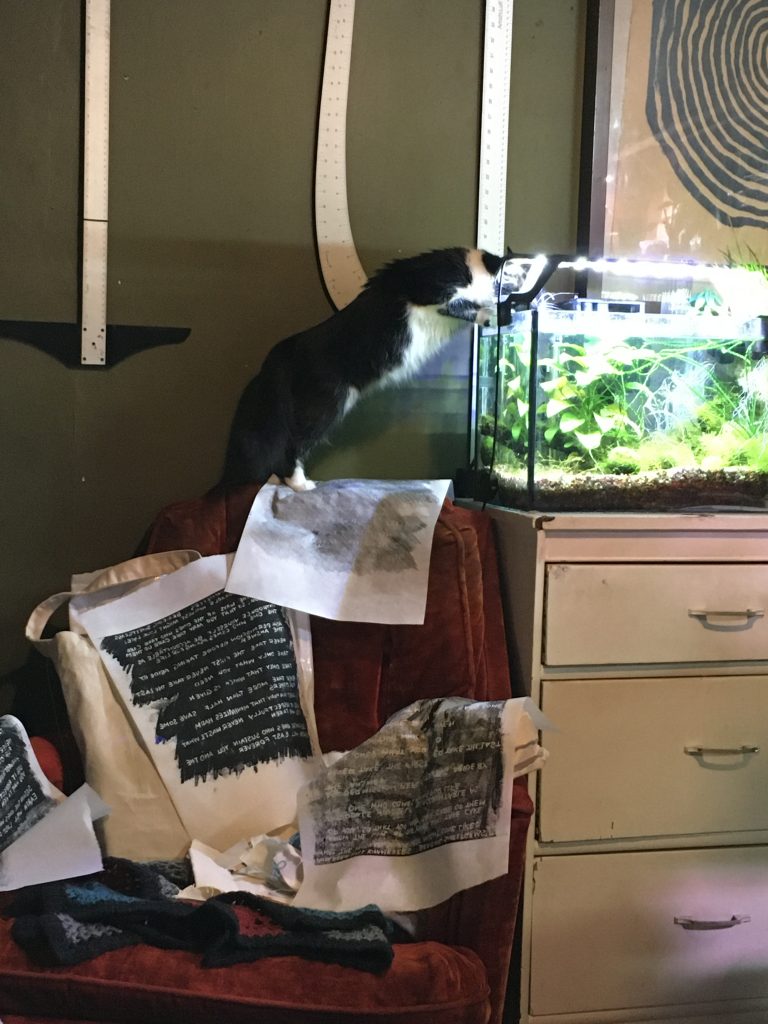

I had decided to spend more time with Robin Wall Kimmerer’s chapter the Honorable Harvest. I ended up carving a quote out into lino, remembering that carving causes tendonitis to flare up in my forearms. I also realized that I made a rookie mistake when I did my carving, I forgot to flip it, and carve the mirror image, so that the ink would transfer onto the paper in the right way. I decided to go ahead and print it anyway because my wrists were hurting too much to consider carving it again. The act of working with the words, and the english language in this way though it did something, each letter was 3-6 digs with the carving tool, straight gestures were easy, but curved letter required a twist, a turn of the work, a twist, a turn of the work, and then back the other way – turn, twist, turn, twist – I was able to get the text complete in two evenings. I purchased the audiobook of braiding sweetgrass, so I could listen to Robin narrate while I worked.
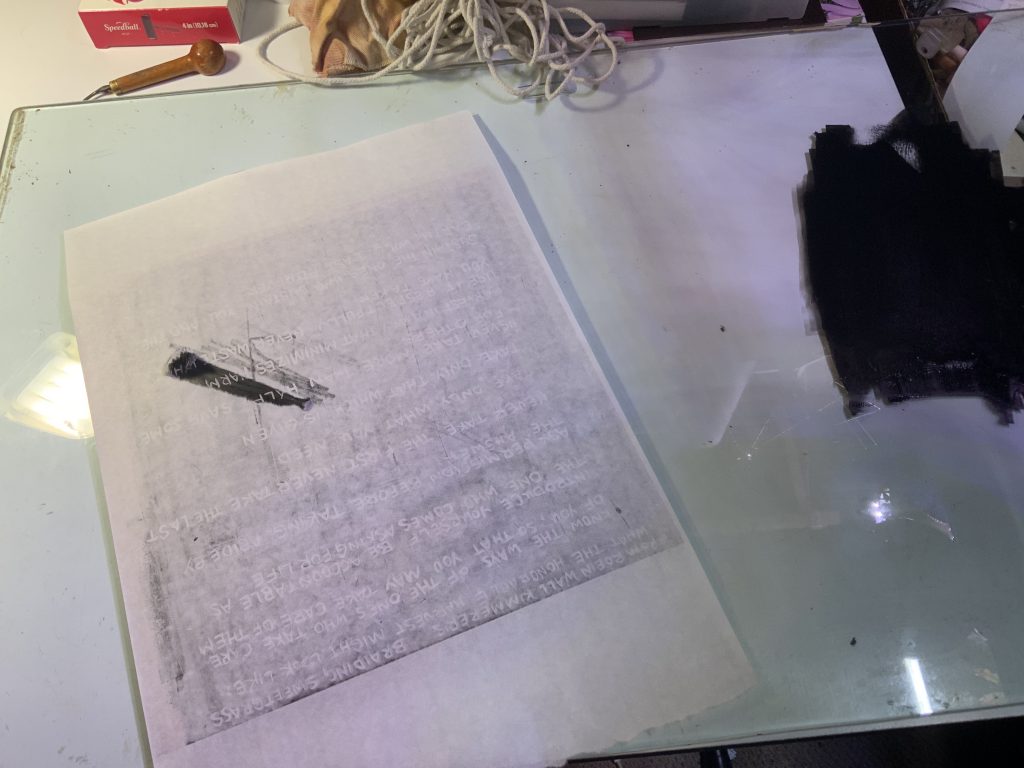

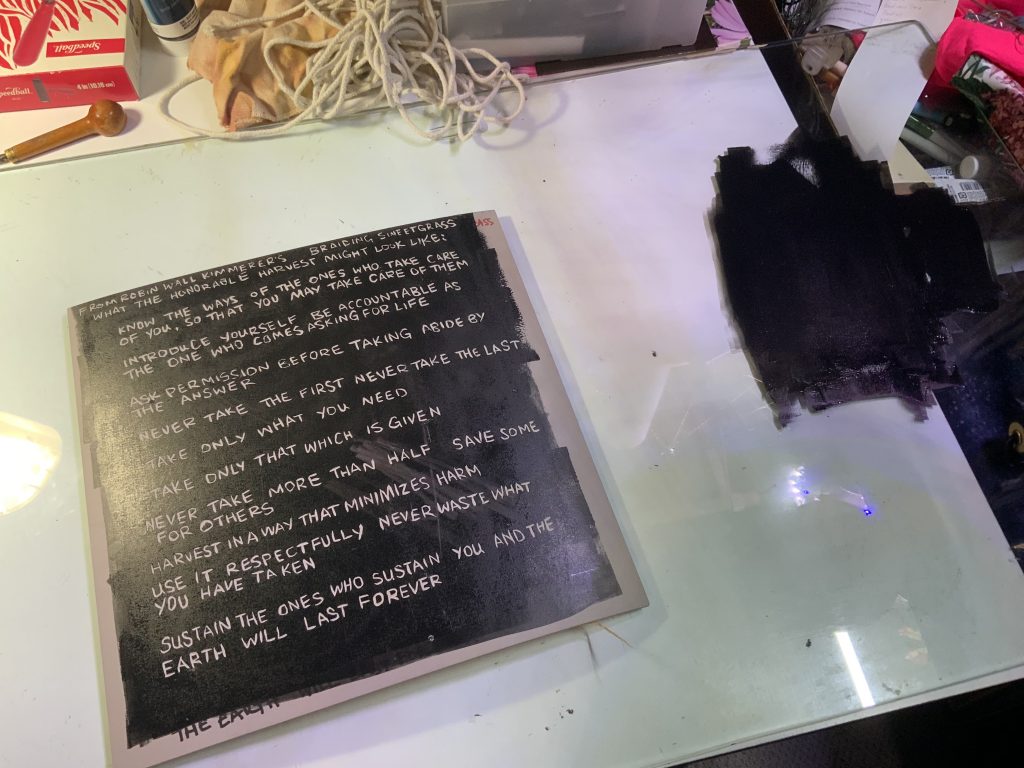
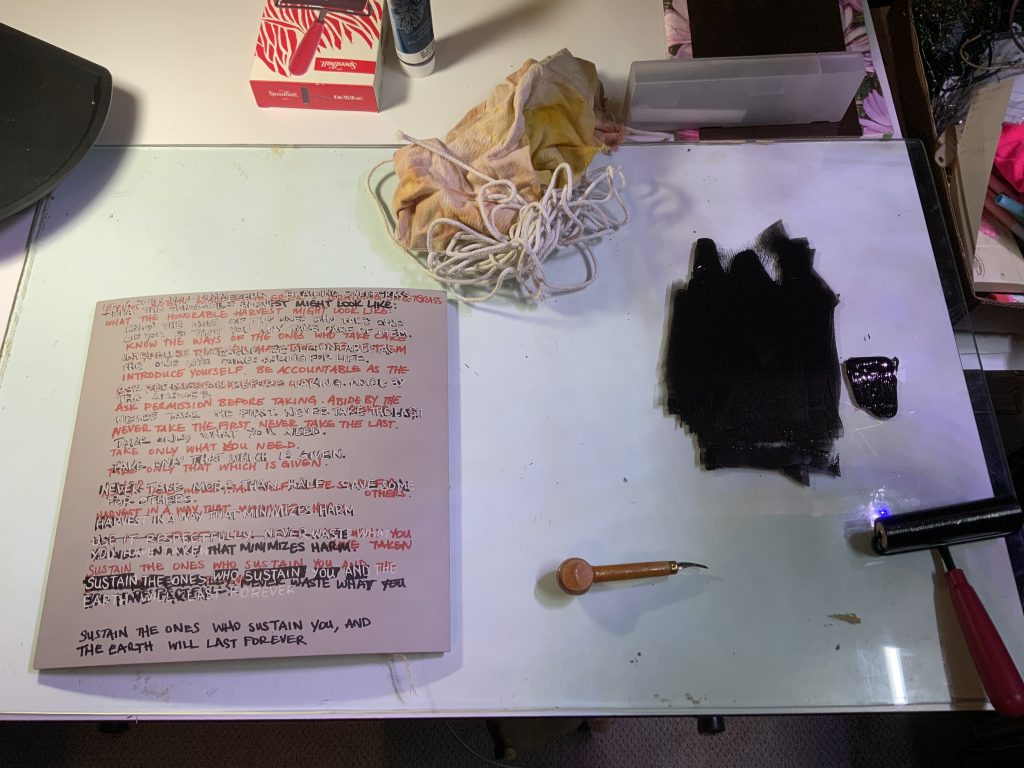
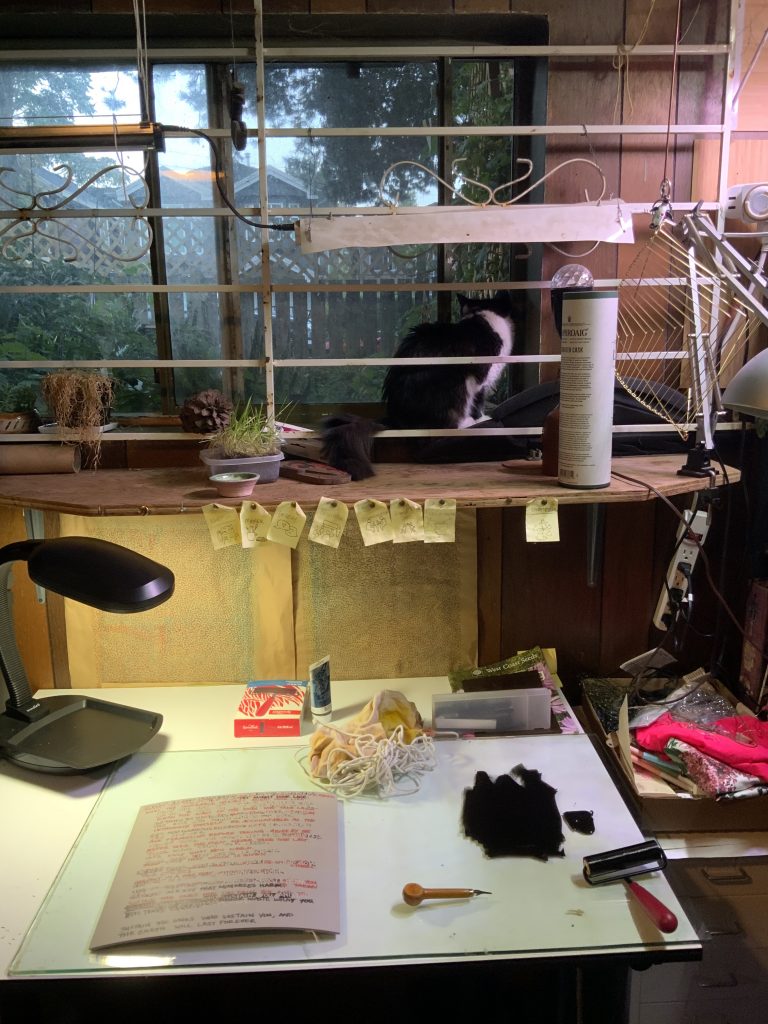

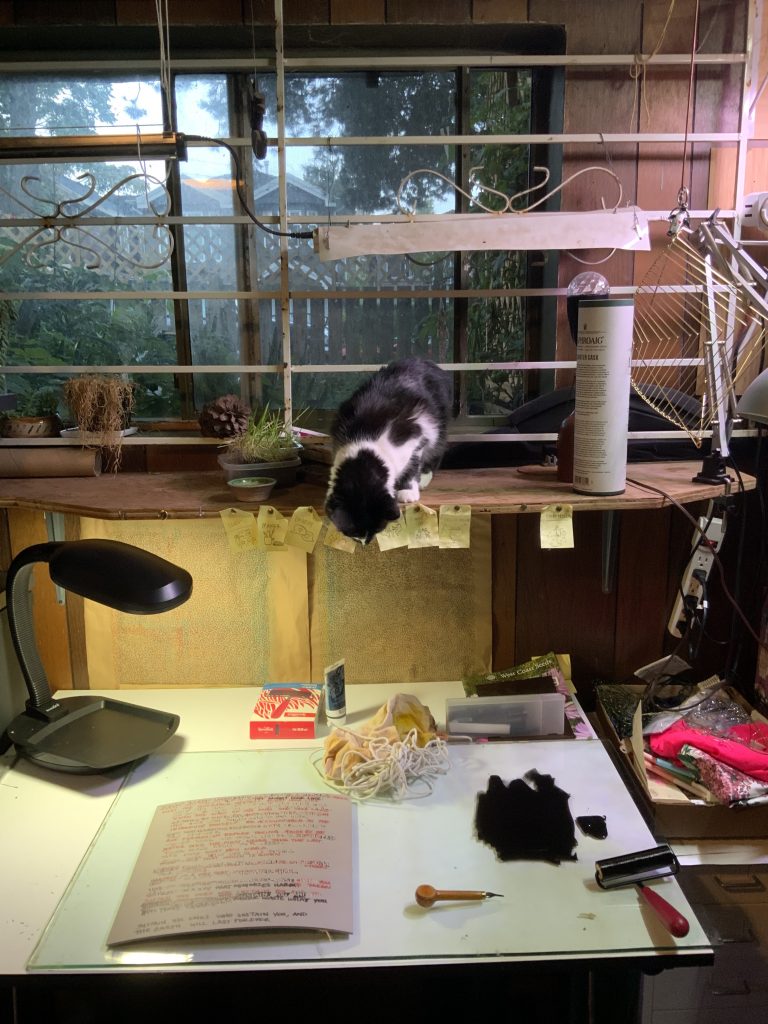
I decided to go ahead and print them, knowing that the action taken was the important part, and I would discover what I needed to in the act of doing. Once the paper was on the inked up lino block I realized I needed something to add pressure to the back of the page, I tried a few things lying around I think it was my charging block for my iphone that worked the best, it was glossy and had generously rounded corners, but that’s where I got the idea. I realized that to get the result of readable text with no computer manipulation I could simply do a rubbing. Down below are some of the computer-flipped images. They have beautiful texture and I may come back to this at another time.
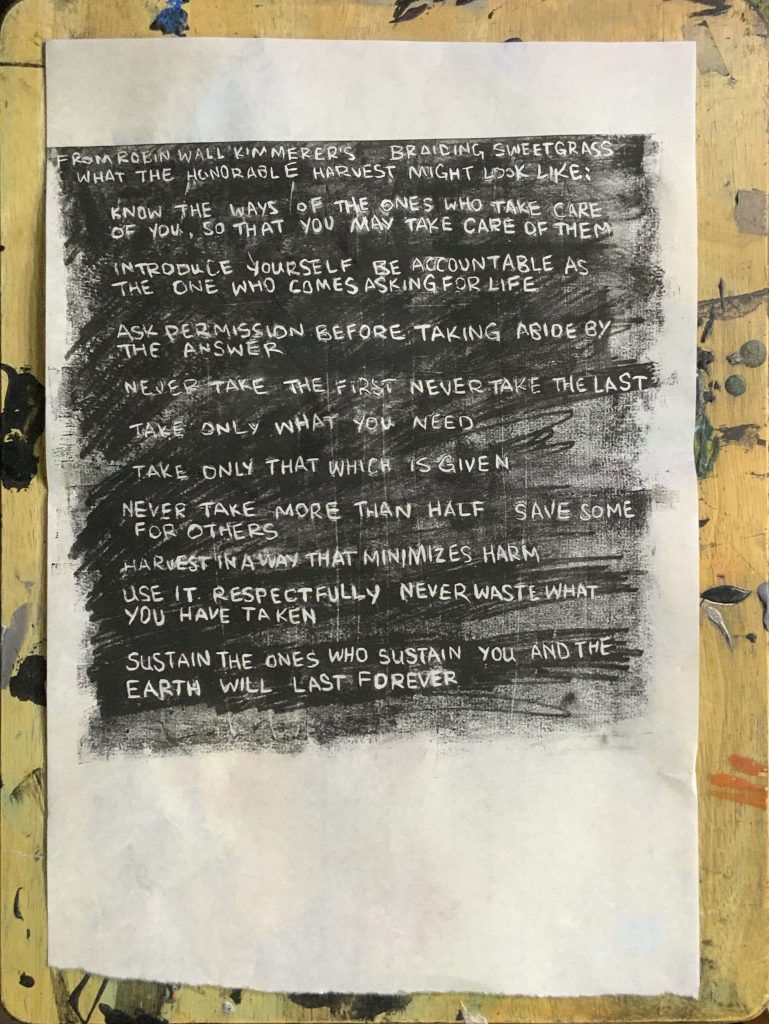
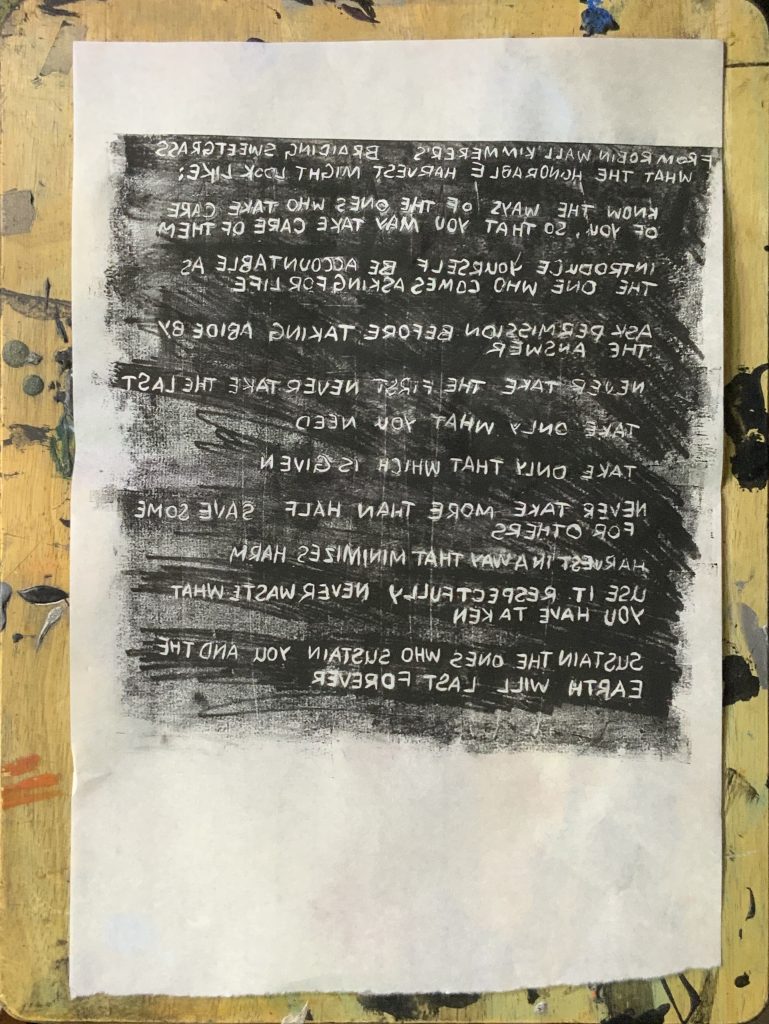

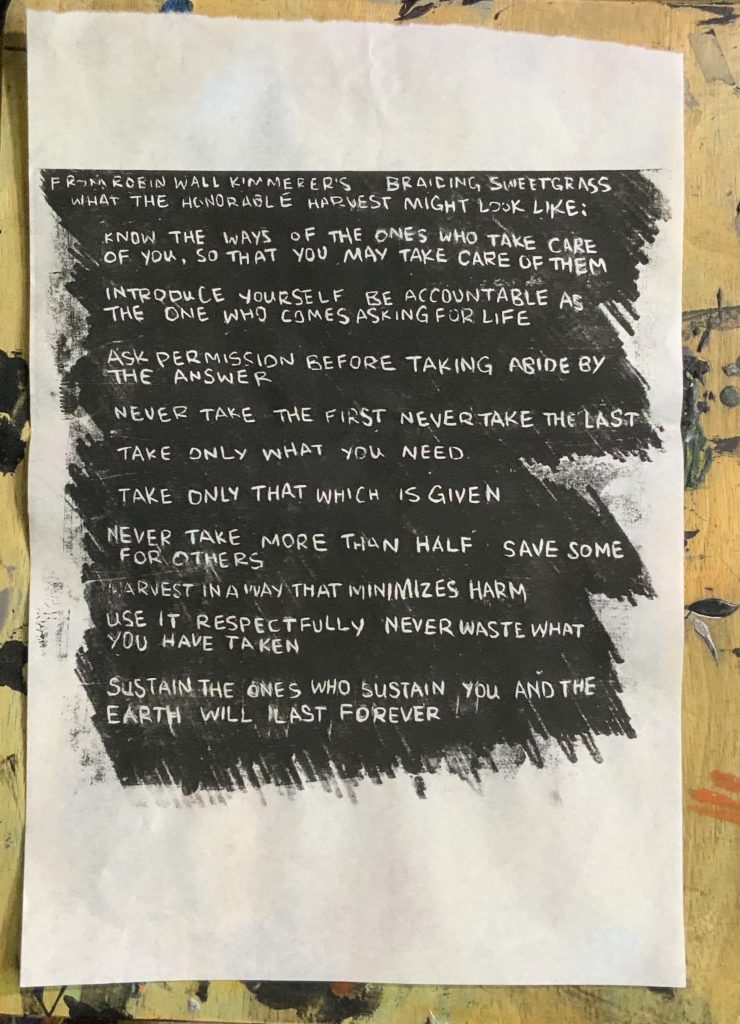
While doing the rubbings though, I discovered something else. The reveal. as seen below, the words just began to reveal themselves, it was as if the conversation was unfolding before me. I was actively listening while simultaneously rubbing the words into existence. Much like the recordings in action 3, there was something happening as I embodied the action, the alchemy wasn’t happening in the first translation, or the second, but somewhere in the third translation it became something else. It made me think about the role of designer, often we are tasked with communicating as clearly as possible, but maybe there is something to being a part of the translation, to finding the action that reveals, but how does power and participation fit into this. I know this action asked us to go out and involve more people, and I am feeling the tug of why. But I also have to recognize that I was in a moment of contraction, and that my process may not align fully with the intentions of the school. I think that is a decolonial act to recognize the deadline as neither important or urgent, just a guide post that I can challenge when needed.
I did experiment with different ways of revealing, I tried spraying water which saturated well, but the words are harder to see, I used conte, and charcoal, with ink and without ink, with used ink. In the end, my favourite method was with ink – because it helps the paper stay in place, and it bled through ever so slightly adding depth to the rubbing and to each letter – and for the rubbing, a regular office pencil, that I shaped and kept sharp with a knife. I got 8/25 printed. Pablo, I know you read all the blogs, I am planning to have one for each of our class members, when you all finally arrive.
